

Someone to watch over you
By Margaret Foster
When Donna Marie’s father was suddenly hospitalized, she visited him, prayed with him, hugged him and said she’d talk to him in the morning. But he died hours later, alone in a sterile hospital room.
“During a long period of grief, I experienced a lot of guilt because I left my dad alone in the hospital,” said Marie, a resident of Alexandria, Virginia. “He kept asking me to stay, and I left anyway.”
Marie’s grief led her to a new career. Today she works as a “death doula,” a nonmedical companion who supports families before, during and after the death of a loved one. Thousands of end-of-life doulas exist in the United States.
“We are there as a nonmedical support to provide comfort in any way that’s needed,” explained Marie, who works at Present for You, based in Fairfax, Virginia.
Marie’s supervisor, Jane Euler, lead doula and founder of that group practice, had similar regrets after she lost her mother 12 years ago. Euler was alone with her mother in a nursing home and didn’t take advantage of what little time she had left with her.
“A few years later, I read an article on death doulas and had an a-ha moment: I should have had someone like that with me. I would have done things differently.”
So seven years ago, after Euler retired from a 32-year career in IT, she signed up for a certification course. In 2021, she founded Present for You, which has six doulas on staff, including Marie.
“I’ve seen such resilience, such beauty, such strength, such love, that it makes you appreciate each average day,” Euler said. “It sounds very cliché, but are we present in the moment? Oftentimes we’re not.”
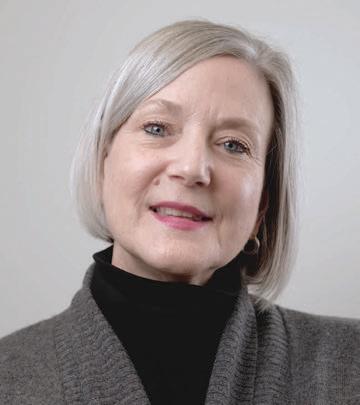
their last hours are “not tragic, but beautiful,” she said.
Meeting a need
“There have been birth attendants and death attendants since the dawn of human need,” said Sam Stebbins, a retired physician who is a death doula in Euler’s practice.
Just as some mothers-to-be make a “birth plan,” you can make a “vigil plan”
for your final days. Doulas can help create and facilitate that plan, choosing the right music, poems to read aloud, or religious rituals.
End-of-life doulas fill the gap between medical care and hospice care. “We’re an




Jane Euler is an end-of-life companion who founded a Virginia-based group practice four years ago to help the dying and their families. Euler and her fellow “death doulas” support people so
Practice makes (im)perfect
I recently enjoyed a virtual presentation about what musicians can learn from the latest in brain science.
The speaker, a musician and cognitive neuroscientist, was enlisted by the Adult Music Student Forum, a local organization I belong to that gives (mostly) older adult musicians the opportunity to perform in front of their peers and, occasionally, the public.

The goal of Dr. Molly Gebrian’s presentation was to help us learn how to practice more effectively and become better, and less nervous, performers. It was fascinating and potentially very helpful to me as a musician.
that, when frequently engaged in this manner, create a neuronal “pathway” that produces a specific action. Like finding your way through a forest, once you’ve laid down a path and walked it many times, it becomes more and more clear and easily traversed.
This is how we learn to perform any action, and how our brains turn the most repeated ones into automatic, habitual behaviors.
FROM THE PUBLISHER
By Stuart P. Rosenthal
But she drew on studies of athletes as well as musicians, and I believe her message should be taken to heart by just about everybody. Here, in my own words, is a truncated layman’s summary of some of the points she made.
Gebrian began by describing how our brains take information in, embed it in memory, and enable us to retrieve it or take action on it. The billions of spindly nerve cells that make up most of our brains communicate with each other by transmitting electrical signals to other cells in their vicinity.
Complex actions involve many nerves
The problem is, nerve cells don’t evaluate the end result to which those paths lead. They simply follow “the road more traveled.” It’s the behaviors we do the most that become “myelinated,” meaning more or less automatic for us, even if they are things we don’t intend to do.
A study of college basketball players doing free throws determined that what makes top performers so much better than the others is how they practice.
First, they set very specific goals for themselves in each practice session. Second, when they miss a basket, they identify a specific intention to improve and methods for doing so. And finally, they analyze exactly what went wrong whenever they miss until they can make the basket repeatedly.
Of course, every basketball player tries
NOTE: We are sorry to announce that, until the Federal Government releases the D.C. budget, cuts in funding mean the “Living Boldly” newsletter will no longer appear in the Beacon. D.C. residents are encouraged to complete the “Livability Survey” on the back page of this issue and drop it off at any D.C. public library.

TheBeacon is a monthly newspaper dedicated to inform, serve, and entertain the citizens of the Greater Washington DC area, and is privately owned. Other editions serve Greater Baltimore and Howard County, Md.
Subscriptions are available via first-class mail ($36) or third-class mail ($12), prepaid with order. D.C. and Maryland residents: add 6 percent for sales tax. Send subscription order to the office listed below. Publication of advertising contained herein does not necessarily constitute endorsement. Signed columns represent the opinions of the writers, and not necessarily the opinion of the publisher.
Publisher/Editor Emeritus –Stuart P. Rosenthal
President/Associate Publisher –Judith K. Rosenthal
Executive Vice President – Gordon Hasenei
Editor – Margaret Foster
Art Director – Kyle Gregory
Vice President of Operations – Roger King
Advertising Representatives –Jill Joseph, Steve Levin, M.K. Phillips, Alan Spiegel
Assistant Editor –Ana Preger Hart
Editorial Assistant – Tori Cleveland
Beacon, P.O.
to make the basket during a free throw. They all claim to focus on what they’re doing. But the intense specificity of the best performers — their forethought, self-monitoring and self-reflection — is worlds away from the general intention of the others.
The same principles apply to musicians. If, during a practice session, I frequently or even occasionally hit the wrong notes in a particular passage (as I commonly do), my brain’s nerve cells only know that I am creating a frequently used path.
The fact that I say (ahem) “Darn!” each time I make a mistake doesn’t tell my nerves this is a bad pathway I want to avoid. And when I find myself making different mistakes at different practice sessions, I’m just muddying the path further, not correcting it.
To improve, what’s called for is making a serious, conscious effort to identify each error, analyze how it happens, and determine what I need to do to avoid it next time.
Finally, I need to pay careful attention to repeatedly playing it correctly — according to Gebrian, five to seven times in a row — until the right notes become habitual.
There are a number of other lessons from studies of musicians that reveal additional, and often counterintuitive, steps to what might be called best practices.
One is that taking breaks every 5 to 10 minutes is a necessary step to making progress. Another is that practicing a little
each day is far better than trying to squeeze one long practice in each week. And randomizing what you work on — jumping around to different pieces or different sections during a practice session — is better than focusing all your attention on one thing.
Let’s face it, our brains are complicated. But fortunately, researchers have been able to tease out some of the best ways to maximize learning.
Even if these methods don’t exactly make sense from a logical perspective, it’s what works that counts. I know I’m going to try putting these ideas into practice.
At the same time, I don’t need to tell myself that I really need to achieve perfection. That’s not why I play the piano or compose music. I do those things because I love doing them.
I’m fond of a saying I heard from a close friend about what we should strive for in making music: “Don’t make it perfect; make it beautiful.”
Those are two different things, and a lot of beauty can coexist with imperfection. That’s what it means to be human.

For more information about music and the brain, see mollygebrian.com. For more about the Adult Music Student Forum, see AMSFperform.org.
Letters to the editor
Readers are encouraged to share their opinions on any matter addressed in the Beacon as well as on political and social issues of the day.
Mail your Letter to the Editor to The Beacon, P.O. Box 2227, Silver Spring, MD 20915, or email to info@thebeaconnewspapers.com.
Please include your name, address and telephone number for verification.
Dear Editor:



2227, Silver Spring, MD 20915 (301) 949-9766 • Email: info@thebeaconnewspapers.com
Website: www.theBeaconNewspapers.com
I was dismayed by the Leisure & Travel article, “See Great Smoky Mountains National Park,” in the Beacon’s May 2025 issue. The author, Glenda Booth, makes a passing reference to a major attraction of the park: “[V]isitors can walk, hike, bike, paddle or just drive...taking to the trails.” She never specifically mentions any of the hiking trails, focusing instead on the more mundane option to “just drive.”
Having visited the Smokies several times in my youth, I recall the awesome Alum Cave Bluffs, the spectacular views from Mt. Le Conte and Charlie’s Bunion, and the less arduous hike to Laurel Falls.
Booth’s article states, “Unfortunately, [the park’s one lodge] is accessible only by foot.” She seems to imply that the park has a great lodge, but that “unfortunately,” you have to negotiate an annoying mountain “on foot” to reach it.
The lodge is not the goal; it exists to allow hikers to rest, rather than attempting the strenuous round trip up the peak and back down in one day. Booth never mentions the name of the mountain: Mt. Le Conte. As the
third-highest peak in the park, it offers spectacular views of nearly 360 degrees.
Hannah Klein Wheaton, MD
Dear Editor:
I recently met a woman at the local supermarket who told me that she recently retired from the federal government. When I asked if it was a forced retirement, she responded, “Let’s just say it came earlier than expected.”
As for her retirement plans, she had none. She said that she was bored and lonely at home taking short walks, reading and watching Netflix.
So I told her about the Osher Learning Institute at George Mason University. There are lifelong learning programs affiliated with many universities across the country. If you think it’s just classes, I said, you are so wrong. It is as much about meeting new friends and participating in fun activities, cultural events and travel.
By the time our short conversation was


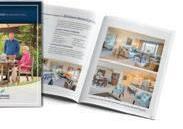
Fitness & Health
TOO FULL TO SLEEP
Tomatoes, cheeseburgers and even dried fruit might keep you up at night
SUMMER SUPERFOODS
Sample the season’s healthiest foods: corn, cherries, blueberries, mint and more GOOD MOODS
Natural ways to feel happier: get outdoors, move more, help out or practice gratitude
HEARTFELT WARNINGS
For women, heart attack symptoms can include nausea, fatigue and back pain
Think before asking Google for medical help
By Tom Murphy
“Dr. Google” is often on call for worried patients, but it may not give the best advice.
Doctors say internet searches for medical information should be done cautiously, especially with artificial intelligence playing a growing role.
Information from the right websites can teach patients about symptoms and prepare them for a doctor’s visit. But a poorly done search might inflame anxiety well before someone reaches the waiting room. It’s important to know the source of the information you find and to avoid trying to diagnose your health issue.
Here are questions to keep in mind if you seek medical help online.
What’s your source?
When you do a search, don’t automatically click the first link. It may not contain the best answers. That’s because some companies pay to have their websites listed at the top of a results page. Those links
may be listed as sponsored.
Scroll for results that come from a source you can trust for medical information. That can include big health systems like the Mayo Clinic or websites run by government agencies like the Centers for Disease Control and Prevention.
“We’ve gotten so used to clicking on that first link,” said John Grohol, a psychologist who specializes in online behavior. “For your health information, especially when it is personal, you want to think about it.”
Should I use AI?
That depends on what it tells you.
More people are using artificial intelligence (AI) to get quick answers pulled from a variety of internet sources. Some Google searches also will generate an AI summary at the top of the results page.
But an AI answer may not say where it got the information. That makes it hard to judge credibility.
AI also can be prone to “hallucinations,” an industry term for issues that cause the
technology to make stuff up. Be especially wary of this if no source is cited.
What should I ask?
How you phrase a question plays a big role in the results you see. Doctors say patients should search for information based on symptoms, not an expected diagnosis.
“You’ve got to ask at the very beginning the right questions,” said Dr. Eric Boose of the Cleveland Clinic.
That means asking, “What could cause a lump to form under my skin?” instead of “Is the lump under my skin cancer?”
Focusing on a diagnosis means you may miss other explanations, especially if you just click the first few links listed in the results.
For some issues, you should skip the search altogether. If you are having chest pains, experiencing dizziness of showing signs of a stroke, seek help immediately.
“You don’t want to delay something that should be treated within a certain amount of time,” said Dr. Olivier Gherardi, medical
director of Brown University Health Urgent Care.
Can the internet diagnose a problem?
No. Leave that to the real doctors who are trained to ask questions that lead to a diagnosis.
Blood in your urine could mean cancer. It also might be caused by kidney stones or an infection.
Unexplained weight loss also could be a sign of cancer. Or it could reflect an overactive thyroid or a new job that causes you to move around more.
Some testing and a visit with a doctor who knows your medical history may be the best medicine in these situations.
“There are a lot of symptoms that overlap between minor conditions and major medical problems,” said Dr. Sarah Sams, a board member with the American Academy of Family Physicians.
© 2025 Associated Press. All rights reserved.
Shingles vaccine may fight dementia
By Lauran Neergaard
A vaccine to fight dementia? It turns out there may already be one — shots that prevent painful shingles also appear to protect aging brains. A new study found shingles vaccination cut older adults’ risk of developing dementia over the next seven years by 20 percent.
The research, published last month in the journal Nature, is part of growing understanding about how many factors influence brain health as we age — and what we can do about it.
“It’s a very robust finding,” said lead researcher Dr. Pascal Geldsetzer of Stanford University. And “women seem to benefit more,” important as they’re at higher risk of dementia.
The study tracked people in Wales who were around 80 when receiving the world’s first-generation shingles vaccine over a decade ago. Now, Americans 50 and older are urged to get a newer vaccine that’s proven more effective against shingles than its predecessor.
The new findings add another reason for people to consider rolling up their
sleeves, said Dr. Maria Nagel of the University of Colorado Anschutz Medical Campus, who studies viruses that infiltrate the nervous system.
The virus “is a risk for dementia, and now we have an intervention that can decrease the risk,” Nagel said.
With Alzheimer’s and other forms of dementia on the rise in an aging population, “the implications of the study are profound,” Dr. Anupam Jena, a Harvard physician and health economist, wrote in a Nature commentary.
What is shingles?
Anyone who’s had ever had chickenpox — nearly everybody born before 1980 — harbors that virus for the rest of their life. It hides in nerves and can break out when the immune system weakens from illness or age, causing painful, blister-like sores typically on one side of the body that last for weeks — what’s called shingles.
About 1 in 3 Americans will get shingles, according to the Centers for Disease Control and Prevention. While most recover, it sometimes causes severe complica-
tions. If it infects an eye it can cause vision loss. Up to 20 percent of shingles patients suffer excruciating nerve pain months or even years after the rash itself is gone.
What’s the link between shingles and dementia?
It’s not clear exactly how Alzheimer’s and other types of dementia form. But certain viruses that sneak inside the nervous system — especially members of the herpes family including the chickenpox virus — have long been suspected of adding to genetic and other factors that make people more vulnerable.
Last summer, doctors at Boston’s Brigham and Women’s Hospital reported that an episode of shingles could raise someone’s risk of dementia by about 20 percent.
Partly, it’s because that virus can cause inflammation, bad for organs including the brain. It also can directly infect blood vessels in the brain, causing clots and impeding blood flow, said Colorado’s Nagel, a risk both for strokes and for dementia.
More intriguing, her lab also discovered shingles can spur formation of a sticky pro-
tein called amyloid that’s one of the hallmarks of Alzheimer’s.
Do shingles vaccines protect against dementia?
Adults who get recommended vaccines tend to have other brain-healthy habits including exercising and a good diet, which made it hard to prove an extra benefit.
Stanford’s Geldsetzer took advantage of “a natural experiment” in Wales, which opened shingles vaccinations with an age limit: anyone 80 or older on Sept. 1, 2013, was ineligible but those still 79 could squeeze in. Comparing seniors who just met or just missed that cutoff would mimic a research study that randomly assigned otherwise similar people to be vaccinated or not.
Geldsetzer’s team analyzed more than 280,000 medical records and found evidence that vaccination did offer some protection against dementia. At the time, people received a first-generation vaccine called Zostavax.
Vaccine
From page 4
An important next step is testing whether today’s vaccine, Shingrix, also offers dementia protection, Nagel said. Another research group recently reported some evidence that it does. Vaccine manufacturer GSK last month announced a collaboration with UK health officials to track seniors’ cognitive health as they get vaccinated.
Geldsetzer also hopes to further study that earlier shot to see if the type of vaccine might make a difference.
What are the shingles vaccine recommendations?
Shingrix is a onetime vaccination, given in two doses a few months apart. The CDC recommends it starting at age 50 for most
BEACON BITS
June 15
people but also for younger adults with certain immune-weakening conditions — including those who years ago got that first-generation shingles vaccine. Fewer than 40 percent of eligible Americans have gotten vaccinated.
Side effects including injection-site pain and flu-like fever and achiness are common. The CDC cautions if you’re currently fighting another virus such as the flu or Covid-19, to wait on a shingles shot until you’re well.
While there’s no proven prevention for dementia, doctors also recommend other commonsense steps to lower the risk. Stay socially and cognitively active. And control high blood pressure and, for people with diabetes, high blood sugar, both of which are linked to cognitive decline.
FREE ROCKVILLE BRASS CONCERT
Student brass players from area high schools and colleges will perform alongside international soloists and the Rockville Brass Band on Sat., June 15 at 2 p.m. at Richard Montgomery High School, 250 Richard Montgomery Dr., Rockville, MD. The free concert follows a June 14 workshop and includes scholarship awards for top student soloists. For more information and to register to observe the workshop and/or the concert, visit rockvillebrassband.org/outreach or email president@rockvillebrassband.org.
SENIOR HEALTH FAIR
June 21
Visit the B’nai B’rith Homecrest House to hear live music, enjoy local food trucks (bring cash) and vendors, peruse wellness resources, participate in raffles and more — all to support Alzheimer’s awareness. This free event takes place on Sat., June 21 from 11 a.m. to 4 p.m. at 14510 Homecrest Rd., Silver Spring. RSVP for a chance to win a gift. For more information, call (301) 598-4000, extension 79.
HOMEOWNERS AND RENTERS TAX CREDIT
Ongoing
Applications are now open for the Maryland Department of Taxation’s 2025 Homeowners’ and Renters’ Tax Credit programs. The deadline for both is Oct. 1. These programs provide tax relief to Maryland residents. For more information or to check eligibility and apply, visit bit.ly/2025TaxCreditApplication.


MAIL OR EMAIL FOR FREE INFORMATION
For free materials about area housing communities, just complete and clip this coupon and mail, or take a picture and email, to the Beacon.
Housing Communities
District of Columbia
o Chevy Chase House (See ad on page 6)
o Inspīr Embassy Row (See ad on page 33)
Maryland
o Brooke Grove (See ad on page 16)
o ChurchillSeniorLiving (See ad on page 11)
o Charles E. Smith Life Communities (See ad on page 9)
o Covenant Village (See ad on page 13)
o Grandview,The/Erickson (See ad on page 3)
o Hill House at Beechfield (See ad on page 19)
o Homecrest House (See ad on page 18)
o Park View Bladensburg (See ad on page 28)
o Park View Columbia (See ad on page 28)
o Park View Emerson (See ad on page 28)
o Park View Laurel (See ad on page 28)
o Riderwood/Erickson (See ad on page 1, 3)
o Willow Manor at Cabin Branch (See ad on page 17)
Virginia
o Ashby Ponds/Erickson (See ad on page 1, 3)
o Falcons Landing (See ad on page 7)
o Greenspring/Erickson (See ad on page 1, 3)
o WoodleighChase/Erickson (See ad on page 3)


Check the boxes you’re interested in and return this form to: The Beacon, P.O. Box 2227, Silver Spring, MD 20915 or take a picture and email to housing@thebeaconnewspapers.com.
The worst foods to eat before going to bed
By Christina Manian, RDN
As we all know, it’s best to try to give your body some time to digest before laying down for the night. Eating too late makes you feel too full when you’re trying to comfortably snooze.
Watch out for these foods, which could keep you up way longer than you’d like.
1. Tomatoes: “For those with acid reflux problems, tomatoes and other acidic foods can cause pain and discomfort in the
esophagus when you lay down,” said Kelly Jones M.S., RD, CSSD, LDN. Enjoy them earlier in the day, when you’ll be upright, and be sure to eat them with other nonacidic foods that balance out the reaction in your stomach.
2. Cheeseburgers: A cheeseburger (just like all foods) can be enjoyed from time to time as part of a healthy eating pattern. But late night isn’t the best time to enjoy them.


“The excessive amounts of saturated fat can slow gastric emptying, leaving food in your stomach, and blood flow directed there while you’re trying to fall asleep,” Jones said. This can cause the body’s hormones to shift to digestion and absorption, rather than sleep.
3. Donuts : Remember that thing called a sugar rush? Definitely not the best option before hitting the hay. Save your donut to have with an omelet in the morning (some good protein!) or as a special treat from time to time.
“This food is both fried and high in sugar, which can cause digestive discomfort and blood-sugar reactions for some people,” Jones said.
4. Chocolate: “While it’s many people’s favorite way to snack at night, chocolate does contain caffeine,” Jones said. Caffeine can be stimulating, so if you’re sensitive, you’ll want to steer clear.
“Many people opt for dark chocolate because it’s lower in sugar and higher in antioxidants, but it’s higher in caffeine as well, so those sensitive to it may have trouble falling asleep,” Jones said.
fits, but when you’re chowing down on dried fruit late at night, you may end up having a little too much fiber too soon, which can lead to gas and bloating that might keep you (or your partner) up at night. Instead, stick with a small serving of fresh fruit, like a small apple or a cup of berries.
6. Spicy foods: Go mild when close to bedtime, as spicy foods — like chili peppers and certain sauces and condiments — can be more acidic and lead to digestive discomfort. Plus, if you have acid reflux, spicy foods may act as a trigger, making it hard to sleep.
7. Pizza: Don’t get us wrong, pizza is absolutely delicious, but it’s a doozy for quality sleep. Acidic tomato sauce, high-fat cheese and refined bread might leave your tummy rumbling when you go to lay down. If you do eat a slice or two close to bedtime, go with a healthier thin-style crust (like a cauliflower or whole-wheat crust), opt for light versus heavy cheese if possible, and swap the marinara sauce for something light, like an olive-oil based sauce.
YIYUN
5. Dried fruit: Dried fruit is high in fiber and naturally-occurring sugar, both of which can lead to an overactive digestive system too close to bedtime.
Fiber has many amazing health bene-
EatingWell is a magazine and website devoted to healthy eating as a way of life. Online at eatingwell.com.
© 2024 Dotdash Meredith. All rights reserved. Used with permission. Distributed by Tribune Content Agency, LLC.


























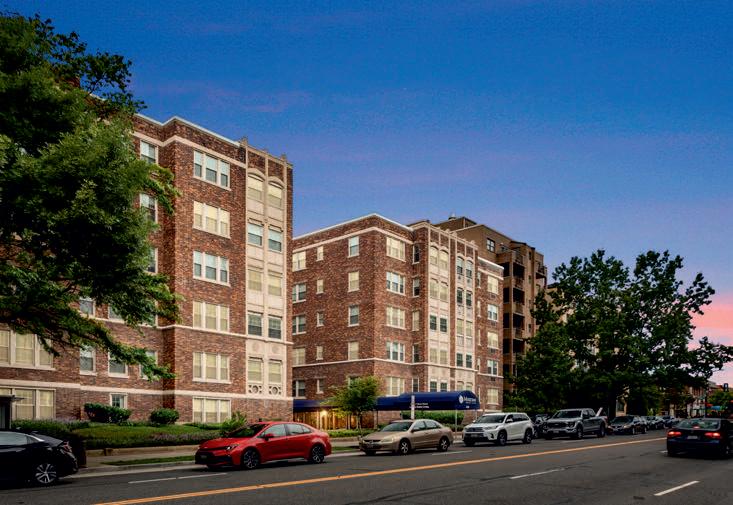


























































































































winnrddd c xfeo atFA !pmuek‘caor,skaerrbuo s y


















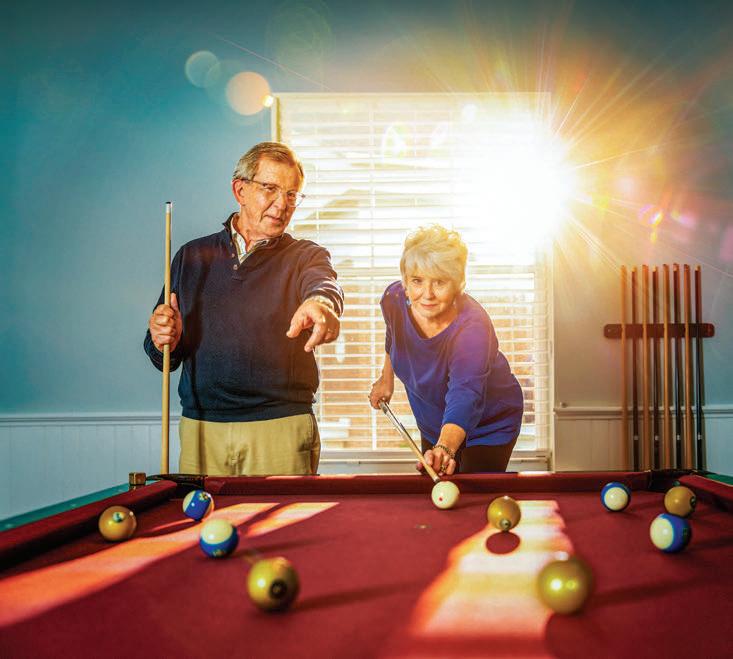
wn orihe teyl tes ltn me erite rgni nn iw-d ar w aru ogni ak t ohgsninnie a wvrhaevnehaetlpoeepro,mstneme r y tilibigildeednaxpeev’etwhawtodnn.Arennis a w’eno y ,er he ,es itin ame hct no -po td an es civre sel ab pe m i, g l naoitpecxeehmtor.Fyaydreveecnellecxlenaoitpe o bmogcninnir a weivleodmtiea,wgnidnasLn’oc l ep v av nes a ahetlpeo ot lablaiva —g in vli roin e n e w s s iihT a mta iuqer reve gninid Con | a o l o a o s c a t t u s t d y t e w e t n bou e a o n m r r | s a oni y op y biligi le i t t o uld ch o s an d t e e a t :ur
Chair yoga increases strength, flexibility
By Leanne Italie
Marian Rivman is pushing 80. Harriet Luria is a proud 83. In this trio, Carol Leister is the baby at 62. Together, they have decades of experience with yoga. Only now, it involves a chair.
Chair yoga adapts traditional yoga poses for older people and others with physical challenges, but the three devotees said after a recent class that doesn’t mean it’s not a quality workout. As older adults have become more active, chair yoga has grown in popularity.
“You’re stretching your whole body,” Rivman explained. “What you can do in the chair is a little bit more forgiving on the knees and on the hips. So as you age, it allows you to get into positions that you were doing before without hurting yourself.”
Sitting down to exercise, or standing while holding onto a chair to perform some poses, may not sound like a workout, but Rivman, Luria, Leister and practitioners everywhere see a world of benefits.
“I took it up because I have osteoporosis
and the chair yoga is much easier,” Luria said. “You don’t have to worry as much about falling and breaking anything. It’s not as difficult as I thought it would be, but it’s not easy. And you really do use your muscles. It’s an excellent workout.”
Not just for older people
Chair yoga is clearly marketed to older women, who made up the class where the three yoga friends got together at the Marlene Meyerson JCC on the Upper West Side of Manhattan. But the practice also has a lot to offer others, said their instructor, Whitney Chapman.
Desk workers can squeeze in 15 minutes of chair yoga, for instance. Many companies offer it as a way to cut down on stress and improve overall health. And people recovering from surgery or injuries may not be ready to get down on a yoga mat, but they can stretch in a chair.
“The very first time in a yoga class that I brought in the chair, all of my students said, ‘I don’t want geriatric yoga. I’m not an old person,’” Chapman said.
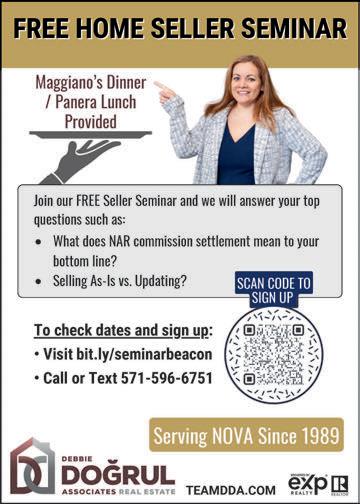
“And then they saw that having a chair is just…another prop that’s going to help you do what you want to do,” she said. “It doesn’t mean you’re geriatric just because you’re sitting in a chair.”
The benefits are many, Chapman said: improved flexibility, strength, balance. And there’s the overall emotional wellbeing that yoga practitioners in general report. It’s particularly useful for people with mobility issues or chronic ailments like arthritis or back pain. Chapman also teaches yoga to cancer and Parkinson’s disease patients.
In addition to restorative and other benefits, the practice of chair yoga can help improve posture for people of all ages and abilities, and help older people prevent falls.
A physical practice that can last a lifetime
Leister recently retired, so she has more time to exercise.
“I’ve been looking for all different kinds of exercises to do, and this is one of them,” she said. “This is the one that I could see doing for the rest of my life.”
Traditional yoga originated more than 5,000 years ago in India. Many of the poses used today are also that old. The precise movements are tied to deliberate, cleans-
ing breathwork.
Rivman has been doing yoga for about 50 years.“Once you start and you get what it does for your body, you don’t want to give it up. And if there’s a way that you can keep doing it and keep doing it safely, that’s a choice you’re going to make,” she said.
Yoga by the numbers
The practice of yoga, including chair yoga, has been on the rise in the U.S. over the last 20 years. In 2022, the percentage of adults age 18 and older who practiced yoga in the past 12 months was 16.9%, with percentages highest among women ages 18 to 44, according to the U.S. Centers for Disease Control and Prevention.
Women are more than twice as likely as men to practice yoga, the data showed.
Chapman and her students have thoughts on why more men don’t practice yoga. Traditionally, Chapman said, the practice was reserved for men, but as yoga became more westernized, women took over.
“Women tend to be more group-oriented. I would love to see more men in class…it’s a great way to meet women if everybody’s single,” Chapman said with a chuckle.

How to choose a sweet, juicy watermelon
By Andrea Beck
You know summer has arrived with the season’s first bite of watermelon. It’s so disappointing when that bite is dry, underripe or lacking sweetness.
With a few watermelon tricks from the National Watermelon Promotion Board and Lee Wroten, vice president of Global Produce Sales in Lakeland, Florida, you’ll know how to pick a perfect watermelon that’s brimming with sweetness and juice. The next time you head to the grocery store or farmers market, keep the four S’s in mind. They’ll help you learn how to pick a ripe watermelon with the best flavor.
Finding the perfect watermelon
1. Sheen: “A watermelon tends to lose its natural sheen and color over time,” Wroten said. Look for a fruit that’s shiny and vibrant in color when picking a watermelon to enjoy this summer.
If the skin appears dull or doesn’t have much color, the watermelon is a little past its prime and won’t be as juicy as other fruits.
2. Shading: Look for a creamy yellow spot on one side of the melon whenever you want to pick a ripe watermelon. This is the side of the melon resting on the ground as it grows; the spot turns yellow as the watermelon ripens, so a sunny yellow shade is a sign of a juicy, ripe melon.
If the spot is pale white, the watermelon was picked before it could fully ripen on the vine. The top should also be a bright green hue with well-defined stripes.
3. Sound: The knock test is a well-known watermelon trick for picking the best melon. A flat or dead thud can clue you in about bruising, overripeness, or a lack of juiciness.
4. Size: Because about 92 percent of a watermelon is water, the fruit should feel heavy relative to its size. Lift up the melon: If it feels heavier than you expected and meets the other criteria above, proceed to the checkout line. If it seems light, keep looking.
How to prep and store watermelon
In addition to these four watermelon tricks, remember to avoid wet, dented, bruised or cracked melons. Also, wash your melon before cutting into it. Like avocados, if the outside of your watermelon isn’t clean before making the first cut, your knife can transfer bacteria from the rind to the fruit inside.
Once you’ve chosen a melon to bring home, refrigerate the whole fruit for up to four days to help it stay fresh. If you plan to use the watermelon soon, it can be stored on the counter for one to two days.
After cutting up the melon, slices will keep in the fridge for up to three days as long as they’re tightly wrapped or kept in a covered container.
THE BRAIN-GUT CONNECTION:
Better Homes and Gardens is a magazine and website devoted to ideas and improvement projects for your home and garden, plus recipes and entertaining ideas.
Online at bhg.com. © 2025 Dotdash Meredith. All rights reserved. Used with permission. Distributed by Tribune Content Agency, LLC.
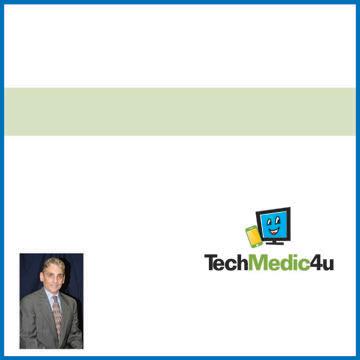
Dr. Marsha Seidelman and Lynn Young, vice president of operations at Mansbach Health Tools, LLC., home of the BCAT ® , will discuss the concept of cognition as a vital sign, the gut-brain connection and how improving your gut health canhelpimproveyourcognition


Get enough protein; plus, tricks to perk up
By Howard LeWine, M.D.
Q: I am worried about losing muscle mass now that I am in my 60s. How much protein do I need to help prevent it?
A: Age-related muscle loss, called sarcopenia, is a natural part of aging. Sufficient protein intake and strength training are two ways to maintain muscle mass and combat sarcopenia.
Many people, even at younger ages, don’t get their optimal daily protein intake, especially if they also are cutting calories to lose weight.
The Recommended Dietary Allowance (RDA) of protein is 0.8 gram per kilogram of body weight, or about 0.36 gram per pound. However, most experts suggest greater daily dietary protein intake than the RDA,
1.0 to 1.2 grams per kilogram of body weight (about 75 grams per day for a 150pound person). People trying to regain muscle mass after an injury or illness should aim for even more, up to 1.6 grams per kilogram of body weight, but no more than 2.0.
The body can make use of only 20 to 30 grams of dietary protein at one time. So there is no benefit from getting most of your daily protein from one meal. Instead, try to evenly distribute your protein over breakfast, lunch, dinner, and snacks.
It’s important to get a realistic estimate of how much protein you consume daily. People tend to over- or underestimate how much protein they actually eat. Track your protein intake with each meal for a week to get a daily average. Read labels and assess your protein per serving as accurately as
Ask an At-Home Care Expert
Alex Petukhov, Owner

Are you considering requesting home care for just a few hours at a time?
You should know that extending to 6–8 hours a day can help you stay at home safer and longer. Here’s why:
Better Health & Longevity – More time means better support for daily needs, reducing risks like falls and hospital visits.
Consistent Caregivers – Longer shifts allow for the same trusted caregiver each day, building strong relationships and personalized care.
More Cost-Effective – Fewer caregiver transitions and optimized scheduling mean more value for your care budget.
Get the care you deserve—stay independent, stay safe, and enjoy life at home!
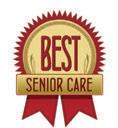

possible, rather than guessing at amounts.
Once you have a general idea of your usual intake, you can adjust it as needed. Your protein should focus on high-quality food sources, like lean poultry, fish, dairy, and plant-based foods, such as soy, legumes, nuts and whole grains.
Another option is whey protein powder or vegan powders made from soy, peas, or brown rice. They can be added to oatmeal and smoothies or stirred into a glass of water. Because powders come with measuring scoops, they can help you track how many protein grams you add to your daily diet.
In addition to sufficient protein intake, maintaining muscle mass also requires two to three sessions per week of strength training. To help maximize muscle growth and improve recovery, consume a portion of your daily protein within 30 minutes to one hour after your strength training workout, through either a drink or snack.
Q: What are some natural ways to help boost your mood and energy when you feel stressed and worn out?
A: “Down” episodes are common and usually pass, but sometimes, you get stuck in a mental and emotional rut. When that happens, here are some strategies that can help pull you out.
Get moving. Exercise stimulates your brain’s production of endorphins — chemicals that create a sense of euphoria.
A review of more than 1,000 trials published online on Feb. 16, 2023, by the British Journal of Sports Medicine found that compared with people who were sedentary, those who engaged in regular physical activity, like walking, resistance training, Pilates, and yoga, reduced their anxiety levels and improved mild depression-related symptoms.
Other research suggests aerobic exercise can have a powerful effect on mood. Any type of exercise is helpful. Your exer-
cise could be as simple as tending your garden or working on house projects.
Hang out with nature. Scientists believe spending time in a natural environment can calm neural activity in the prefrontal cortex, a brain region associated with negative emotions. Research also has found that interacting with nature can lower blood pressure and cortisol, the stress hormone. The type of setting doesn’t matter as long as you find it soothing.
Train your brain. Engaging in mentally stimulating activities like painting and other art forms, learning to play a musical instrument, or learning a language can be a great mood booster, as they provide a sense of accomplishment.
Practice gratitude. Identifying and writing down things for which you are grateful can help offset feeling anxious or stressed. Begin a journal to record these examples of gratitude. Your entries might include bigpicture items like your ability to exercise daily and enjoy a circle of close friends, or even satisfying occurrences like a friendly exchange at a store. Try to provide details about why you are thankful and how these items improve your outlook. You don’t have to write every day — some studies have found that even just once a week is helpful. Lend a helping hand. You can reap many emotional rewards through volunteering. A study of older adults found that people who volunteered at least two hours per week felt happier and more optimistic than those who didn’t. Volunteering also can boost selfesteem by providing a sense of purpose. Make time to meditate. Practicing meditation can help you reduce stress by focusing on the present moment rather than ruminating about the past or future.
[Ed. Note: Music is also a mood-altering




Do you know your bad cholesterol number?
By Family Features
These days, wellness information is practically everywhere you turn. Do this; don’t do that. Eat more of this; eat less of that. This is good for you; that is bad.
It can be hard to cut through all the noise, but the reality is, when it comes to something as serious as your heart health and LDL cholesterol — the “bad” cholesterol — ignoring it can be downright dangerous for your health.
According to the American Heart Association, about every 40 seconds, someone in the United States has a heart attack, and strokes occur at about the same frequency.
High LDL cholesterol, often called “bad” cholesterol, significantly increases your risk of heart disease.
A poll conducted by The Harris Poll for the American Heart Association revealed 75% of heart attack and stroke survivors reported having high cholesterol. Yet nearly half (47%) ofheart attackand stroke survivors are unaware of their LDL cholesterol number. Survivors need to know about LDL cholesterol to proactively manage their health.
In fact, knowledge is key to reducing your risk of heart disease. Understanding the impact of LDL cholesterol and knowing your LDL number can help you make informed decisions.
Cholesterol, good and bad
Cholesterol is a waxy, fat-like substance
Mood boosters
method, according to NIH.]
If your symptoms last for two weeks or longer or begin to interfere with daily life — for instance, if you’re not sleeping well,
your body needs to build cells and produce hormones. However, not all cholesterol is created equal.
LDL (low-density lipoprotein) cholesterol: This is the “bad” cholesterol. When too much LDL cholesterol circulates in the blood, it can build up in the inner walls of the arteries that feed the heart and brain, forming plaque that can narrow and eventually block these arteries, leading to heart attack or stroke.
HDL (high-density lipoprotein) cholesterol: Known as the “good” cholesterol, HDL helps remove the “bad” cholesterol from the arteries, protecting against heart attack and stroke.
A silent threat
Many people think high cholesterol has obvious signs, but that’s not always the case. In fact, about half of U.S. adults and 42% of heart attack and stroke survivors mistakenly believe high cholesterol has clear symptoms. However, high LDL cholesterol typically doesn’t show any signs, which is why it’s known as a silent threat to your heart.
People who have had a heart attack or stroke are at higher risk of future cardiovascular problems, which is why it’s important to monitor your cholesterol regularly to help prevent future events.
It’s also important to know high LDL cholesterol can be genetic, meaning someone who eats a healthy diet and exercises regularly can still have high cholesterol.
becoming more isolated, or losing interest in favorite activities — you should talk with your doctor.
Howard LeWine, M.D. is an internist at Brigham and Women’s Hospital in Boston. © 2025 Harvard University. Distributed by Tribune Content Agency, LLC.
Additionally, the risk of high LDL cholesterol increases with age.
That’s why the American Heart Association’s “Lower Your LDL Cholesterol Now” initiative, nationally sponsored by Amgen, emphasizes the importance of regular cholesterol checks regardless of your weight, diet and physical activity levels.
Knowing your LDL cholesterol number — and understanding the target levels based on your health history — gives you the opportunity to manage your health proactively. This enables you to make informed decisions to prevent future heart issues.
Know your number
You can reduce your risk of a heart attack or stroke by knowing and addressing your LDL cholesterol number.
Working closely with your doctor allows you to actively manage high LDL cholesterol — often a key risk factor you can help control — and together, you can develop a personalized treatment plan.
Ask your doctor or health care provider for a cholesterol test to know your LDL number. Understanding your cholesterol number is the first step toward managing it effectively. If necessary, appropriate management of your LDL cholesterol can help reduce your risk of a heart attack or stroke.
Your doctor may also talk with you about


your personal and family medical history; previous heart-related medical events such as a heart attack or stroke; lifestyle habits such as tobacco use, obesity, unhealthy living or aging; racial and ethnic backgrounds; and reproductive health.
Lower is better
When it comes to your cholesterol, guidelines from the American Heart Association and the American College of Cardiology recommend “lower is better” to reduce your risk. Studies show that an LDL number below 100 mg/dL is ideal for healthy adults.
If you have a history of heart attack or stroke and are already on a cholesterollowering medication, your doctor may aim for your LDL to be 70 mg/dL or lower.
Talk to your doctor about the right treatment plan for you. Positive lifestyle habits, such as exercising and eating a healthy diet, may also help.
However, if you’ve had a heart attack or stroke before, lifestyle changes alone may not be enough to lower your risk of another event. Your doctor may recommend cholesterol-lowering medications to protect your heart health.
Learn more about LDL (bad) cholesterol by visiting heart.org/LDL. This story was sponsored by the American Heart Association.



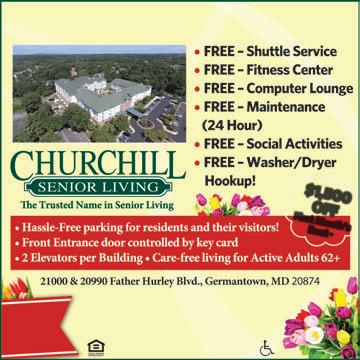











































Health Shorts
FDA approves blood test for Alzheimer’s
In May U.S. health officials endorsed the first blood test that can help diagnose Alzheimer’s and identify patients who may benefit from drugs that can modestly slow the disease.
The test can aid doctors in determining whether a patient’s memory problems are due to Alzheimer’s or a number of other medical conditions that can cause cognitive difficulties. The Food and Drug Administration cleared it for patients 55 and older who are showing early signs of the disease.
More than 6 million people in the United States and millions more around the world have Alzheimer’s, the most common form of dementia.
The new test, from Fujirebio Diagnostics, Inc., identifies a sticky brain plaque, known as beta-amyloid, that is a key mark-
er for Alzheimer’s. Previously, the only FDA-approved methods for detecting amyloid were invasive tests of spinal fluid or expensive PET scans.
The lower costs and convenience of a blood test could also help expand use of two new drugs, Leqembi and Kisunla, which have been shown to slightly slow the progression of Alzheimer’s by clearing amyloid from the brain. Doctors are required to test patients for the plaque before prescribing the drugs, which require regular IV infusions.
“Today’s clearance is an important step for Alzheimer’s disease diagnosis, making it easier and potentially more accessible for U.S. patients earlier in the disease,” said Dr. Michelle Tarver of FDA’s center for devices.
A number of specialty hospitals and laboratories have already developed their own in-house tests for amyloid in recent years. But those tests aren’t reviewed by the FDA and generally aren’t covered by insurance. Doctors have also had little data to judge which tests are reliable and accurate, leading to an unregulated marketplace that some have called a “wild west.”
Several larger diagnostic and drug com-
panies are also developing their own tests for FDA approval, including Roche, Eli Lilly and C2N Diagnostics.
The tests can only be ordered by a doctor and aren’t intended for people who don’t yet have any symptoms. —AP
Loneliness linked to dementia risk
Feeling lonely increases the risk for dementia by 31%, according to an analysis of data from multiple National Institute on Aging (NIA)-funded population-based studies.
These findings were focused explicitly on loneliness and looked at its links to Alzheimer’s disease, vascular dementia, and cognitive impairment without dementia. The research was funded by NIA and published in Nature Mental Health earlier this year.
This study analyzed data from more than 600,000 participants across 21 longitudinal cohorts, making it an especially comprehensive investigation into the impact of loneliness on cognitive function. It found that loneliness increased the risk for dementia at a magnitude similar to the impact of being physically inactive or smoking.
Specifically, loneliness increased the risk for Alzheimer’s by 14%, vascular dementia by 17% and cognitive impairment by 12%. These findings were consistent even after
controlling for factors such as depression and social isolation, underscoring loneliness as an independent risk factor.
Loneliness and social isolation are known to pose health risks in older adults.
Led by researchers at Florida State University, the scientific team performed its large-scale analysis to address three questions: 1) Is loneliness related to increased risk of all-cause dementia? 2) Is loneliness related to increased risk of specific dementias — Alzheimer’s and vascular dementia? And 3) Is loneliness related to cognitive impairment?
In addition to collating across 13 published studies, the scientists also completed new analyses by coordinating across studies from the NIA-funded Gateway to Global Aging Data that included loneliness and assessments of cognitive status.
The authors of the study suggested this work confirms the association between loneliness and risk of dementia.
However, they note as a limitation that the number of selected studies is still small, especially for Alzheimer’s and vascular dementia. They proposed that future studies should include better distinction between mild-to-severe cognitive impairment not caused by dementia.
Additionally, they suggested that identifying the types and sources of loneliness would be an important way to develop interventions. —National Institute on Aging
AARP
DC Congratulates Ms. Delores “Dee” Powers
Recipient of the AARP Andrus Award for Community Service
Delores Powers is the recipient of the AARP District of Columbia Andrus Award for Community Service – the organization’s most prestigious and visible volunteer award for community service.
AARP DC is proud to honor Ms. Powers for her volunteer efforts at Model Cities Senior Wellness Center. She was recognized for her endless dedication, vibrant spirit, and unwavering commitment to uplifting others, transforming countless lives.
Do you know a volunteer deserving of the Andrus Award? Nominations fthi’dillbtdthh Otb52025
for this year’s awar
Learn more at aarp /aarpdc @ / rd will be accepted through October 5, 2025 p.org /AAndrusAward @aarpdc
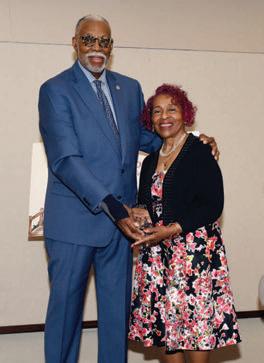
Natural ways to calm small fiber neuropathy
If you’re dealing with strange nerve symptoms such as burning, tingling or electric shock sensations, small fiber neuropathy (SFN) might be the culprit. This condition affects the tiny, unmyelinated nerves responsible for pain, temperature and autonomic functions.
One overlooked cause? Mutations or dysfunction in sodium channels, which act like electrical gates in your nerves. In SFN, these gates can malfunction — staying open too long or firing too often — leading to pain, tingling or weird symptoms like heart palpitations and digestive issues. Blocking or modulating them helps calm the storm.
guide on my website (see below).

By Suzy Cohen
Certain medications calm nerve hyperexcitability by blocking sodium channels, but did you know there are natural compounds that do too?
While clinical trials are still lacking, I’ve researched promising options and compiled them into a handy downloadable
Let’s look at four natural sodium channel blockers first. Even though they are available without a prescription, consult your doctor about how these would affect your current medication protocol.
Alpha lipoic acid
This supplement reduces oxidative stress and stabilizes nerve membranes, indirectly calming sodium channels. The approximate dosage is 600 mg once or twice daily.
Caution: This lowers blood sugar and helps with some complications of diabetes, so monitor closely and double-check with your doc if you use insulin or diabetic meds.
Cannabidiol (CBD)
CBD modulates ion channels like Nav1.7, which plays a role in pain and inflammation. Start low (10 to 25 mg) and adjust as needed.
Caution: May interact with medications
(especially CYP450 substrates such as warfarin, atorvastatin or clopidogrel), potentially altering their effectiveness or increasing the risk of side effects.
Capsaicin (chili pepper extract)
Chili pepper extract temporarily overstimulates pain nerves, then desensitizes them. It may influence sodium and TRPV1 channels. Apply it topically with a cream sold online or at pharmacies. There are prescription-strength patches available with a doctor’s order.
Caution: Expect initial burning; do not apply to broken skin. Always remember to wash your hands well and avoid touching your eyes and mouth.
Omega-3 Fatty Acids (EPA/DHA)
These strengthen nerve membranes and reduce inflammation and sodium in-
flux. Dose: 1,000 to 3,000 mg daily (combined EPA/DHA).
Caution: May thin blood, which is considered helpful; however, consult your doctor if you take anticoagulants.
If you have hypothyroidism or Hashimoto’s, these conditions will worsen sensations of SFN. Also, SFN is a known complication of diabetes, even if you have wellmanaged glucose.
You can download my free guide at my website, suzycohen.com. Also, consider signing up for my free email newsletter.
This information is opinion only. It is not intended to treat, cure or diagnose your condition. Consult with your doctor before using any new drug or supplement.
Suzy Cohen is a registered pharmacist and author of The 24-Hour Pharmacist and Real Solutions from Head to Toe














Surgery treats benign prostate hyperplasia
By Charlie Schmidt
Most men over 50 will develop an enlarged prostate. Also called benign prostatic hyperplasia (BPH), this bothersome condition makes it hard to urinate and can eventually lead to other problems, such as infections, kidney stones and bladder damage, if left untreated.
Many different BPH therapies are available, including medications and various types of surgery. One of the newer surgical options, called aquablation, trims excess prostate tissues with highly pressurized jets of saline.
Doctors perform aquablation in the operating room while looking at the prostate gland on an ultrasound machine. Patients are put under general anesthesia, so they don’t feel any pain during the procedure.
BEACON BITS
Ongoing
Aquablation is gaining in popularity — in part because, unlike other more traditional BPH treatments, it can preserve normal ejaculation. In September, researchers published a study showing that improvements in urinary function from aquablation were still holding up after five years.
Results of data analysis
The study assessed long-term data from two clinical trials. The first, called the WATER trial, launched in 2015 and enrolled 116 men with prostates ranging up to 80 cubic centimeters.
The second trial, WATER II, launched in 2017 and enrolled 101 men with prostates ranging between 80 and 150 cubic centimeters. (Normal prostates range from 25
FREE ONE-ON-ONE TECH SUPPORT IN MD
The Marylanders Online call center provides free, one-on-one technical assistance in English and Spanish to Maryland residents. Get help with devices, including software and hardware, internet service, digital skills classes and more. Tech support is available Monday through Friday from 10 a.m. to 8 p.m. and Saturday from 10 a.m. to 5 p.m. Call (301) 405-9810 or toll-free (866) 206-9467. For more information, visit marylandersonline.umd.edu.

to 30 cubic centimeters in size.) Enrolled patients had a median age of 66 in the WATER study and 68 in WATER II.
Both clinical trials used the so-called International Prostate Symptom Score (IPSS) to measure treatment-related improvements in urinary functioning and quality of life. Calculated based on how patients rate their symptoms on a standardized questionnaire, IPSS scores greater than 19 indicate severe symptoms.
When they first enrolled in the trials, men in the WATER and WATER II studies reported average IPSS scores of 22.9 and 23.3 respectively. Five years later, the average respective scores were much lower: 7.0 and 6.8. Only 1% of men were taking BPH medications after five years, and fewer than 5% had been surgically re-treated.
A word of caution
Aquablation can result in extended bleeding, cautions Dr. Heidi Rayala, an assistant professor of urology at Harvard Medical School and a member of the Harvard Medical School Guide to Prostate Diseases advisory board. That’s because unlike other types of surgery for BPH, including prostate enucleation, aquablation doesn’t cauterize tissues with heat.
“I tell my patients to expect some blood in the urine for about four to six weeks
after the procedure,” Dr. Rayala said. Moreover, aquablation may be unsuitable for some men who take blood thinners to prevent blood from clotting, according to Dr. Rayala. Appropriate candidates for the surgery must be able to “safely discontinue anticoagulant medications during post-operative healing, given the bleeding risk,” Dr. Rayala said.
Still, aquablation is an excellent option for most men, Dr. Rayala said, especially those with medium to large prostates “who want a durable solution with a lower risk of sexual side effects.”
Larger studies are necessary, said Dr. Marc Garnick, the Gorman Brothers Professor of Medicine at Harvard Medical School and Beth Israel Deaconess Medical Center, and editor in chief of the Harvard Medical School Guide to Prostate Diseases
“These early results are encouraging, but limited by a relatively small number of patients,” Garnick said. “Further evidence with a significantly larger number of patients and longer follow-up will help to support this new method of reducing prostate tissue as an important treatment option.”
Charlie Schmidt is editor of the Harvard Medical School Annual Report on Prostate Diseases.
© 2025 Harvard University. Distributed by Tribune Content Agency, LLC.























Keeping older drivers safe on the road
Dear Savvy Senior,
What safety tips can you recommend for older drivers? My 86year-old mother, who still drives herself, had a fender bender last month, and I worry about her safety.
Back Seat Daughter
Dear Back Seat,
With more and more older Americans driving well into their 70s, 80s and beyond, there are a variety of things your mom can do to help maintain and even improve her driving skills. Here are some recommendations by driving rehabilitation specialists that work with older drivers.

ple medications or combinations of medications that can make them drowsy or lightheaded, which can impair judgment or affect reflexes or alertness necessary for safe driving. So, an annual physical or wellness examination and medication review is also a smart way to verify your mom’s driving safety.
driving in poor weather conditions.
Evaluate her driving: To stay on top of your mom’s driving abilities, you should take a ride with her from time to time, watching for problem areas. For example: Does she drive at inappropriate speeds, tailgate or drift between lanes? Does she have difficulty seeing, backing up or changing lanes? Does she react slowly, get confused or make poor driving decisions?
ADED.net or AOTA.org and search for “driving practitioner directory.”
When it gets to the point that your mom’s driving isn’t safe anymore and she needs to quit, you may need to help her create a list of names and phone numbers of family, friends and local transportation services that she can call on for a ride.
Get an eye exam: Because about 90 percent of the information necessary to drive is received through our eyes, this is a good first step in ensuring your mom’s driving safety. Get your mom’s eyes checked every year to be sure her vision and eyewear is up to par.
Get a physical or wellness exam: As people age, it’s also important to monitor changes in overall health as it relates to driving. Medical conditions like arthritis, dementia, diabetes, Parkinson’s disease, sleep apnea and stroke can all affect driving.
In addition, many people also take multi-
Take a refresher course: AARP and the American Automobile Association (AAA) both have older driver improvement courses that can help your mom brush up her driving skills and understand how to adjust for slower reflexes, weaker vision and other agerelated physical changes that can affect driving. Taking a class may also earn her a discount on her auto insurance.
To locate a class, contact your local AAA (AAA.com) or AARP (AARPdriversafety.org, 1-888-227-7669) office. Most courses cost around $20 to $30 and can be taken online. Make some adjustments: Adjusting when and where your mom drives is another way to help keep her safe and behind the wheel longer. Some simple adjustments include not driving after dark or during rush hour traffic, avoiding major highways or other busy roads, and not
For more evaluation tips, AAA offers an older driver self-rating assessment exercise (Drivers 65 Plus) that you or she can access at Exchange.AAA.com/safety/senior-driver-safety-mobility.
If your mom needs a more thorough evaluation, you can turn to a driver rehabilitation specialist who’s trained to evaluate older drivers and offer suggestions and adaptations to help keep her safe. But be aware that this type of assessment can run anywhere between $100 and $500 or more.
To locate a professional in your area, visit
BEACON BITS
Ongoing

To find out what transportation services are available in your mom’s area, contact the Eldercare Locator (1-800-677-1116), which will direct you to her area agency on aging for assistance.
Ed. Note: Local “villages” are nonprofits which may provide free rides in your area. To find one near you, visit dcvillages.org, email info@dcvillages.org or call (202) 724-5626.
Send your senior questions to: Savvy Senior, P.O. Box 5443, Norman, OK 73070, or visit SavvySenior.org. Jim Miller is a contributor to the NBC Today show and author of The Savvy Senior book.
VOLUNTEER IN FAIRFAX COUNTY
Help low-income neighbors in Fairfax County by volunteering with FACETS, a local nonprofit that makes a difference in the lives of individuals experiencing homelessness, hunger and poverty. Apply for one of many positions, from front desk to community outreach to afterschool tutoring, at facetscares.org/volunteer. For more information, call (703) 352-5090.

SAVVY SENIOR
By Jim Miller
MA
CO EX DISCOV EN
Le










INTENANCE-FREE
REE LIVING NEVER S
R LOOKED SO BEAUUTIFUL
fi TO RE X W VER the casual elega UR a c XPLORE Weestbrook NJOY our 220-acre earn how to become il id ET M ance and comfort o ottage and MEET c ke Clubhouse, it s re campus of lush pa e a no-obligation pr ithlt of our independent ur rent resident s. estaurant and fitne st ures and hardwoo r ior it y list member bfit f . liiv v ing cottages ess center. od forest. r, examine lif tl EN





ancial options and r

RO T WESTBR
fina y s e pt t E a u sd ay, J O pti on



ne 2 · l inf rm
1
OKE CLUBHOUSE



11:15 a.m. & 12 18310 SL ADE SCHO O rev iew the long - ter m M s 2 11 A.M.–2 n se ssi o ns :15 p.m. OL R OAD · SANDY SPR m s of a secu M 860 P.M. RING, MD 20860 ure li est yle. V T LI 18100 d hlR 0SldS t 301-388 oni g h T e r 8-7209 gis a O G IN 01-388Sand 3 7209 in oad hool R c lade S 0 S is@b b EN P






























Add these summer superfoods to your list
By Melissa Kravitz Hoeffner
Summer is arguably the best season for eating fresh produce, and it’s a top time to fill up on superfoods. Though it’s not an official scientific category, superfoods are noted by nutrition specialists as foods that are especially nutritionally dense and offer multiple benefits in each serving. Superfoods can help with building a strong immune system, support gut health, and do so much more.
Here are the best summer superfoods to stock up on ASAP.
Cherries
Nothing hits like a ripe summertime cherry. “Cherries are great for snacking poolside, and easy on the go,” said Joanna Gregg, RD at MyFitnessPal. “They’re full of antioxidants that help reduce inflammation and protect the body from cell damage.” They’re also high in potassium and vitamin C.
“Cherries have a lower glycemic index than many other fruits,” added Jennifer House, MSc, RD and founder of First Step Nutrition. “They are rich in polyphenol compounds, which may protect against metabolic syndrome. Plus, cherries contain anthocyanins, which may contribute to brain health and protect against cancer.”
Sweet corn
Is any summer meal complete without

corn in some form? And yes, corn is a summer superfood. “It’s a good source of vitamins and minerals, and one medium ear has 2 grams of fiber,” Gregg said, noting that this fiber acts as prebiotics to aid digestion and gut health.
Tomatoes
An abundance of tomatoes is great for your tastebuds and health. “Tomatoes get their bright red color from lycopene, a potent antioxidant that reduces inflammation throughout the body and may improve conditions such as diabetes, skin and bone diseases, heart complications, and prevention of certain types of cancers, according to a 2020 review in Antioxidants ,” explained Lauren Fleck, MS, RD.
Another antioxidant, lutein, is linked to improved eye health, heart health, and sustained cognitive function, Gregg notes. She recommends adding fresh tomatoes to salads or sandwiches, or enjoying small tomatoes as a snack.
Mint
This bountiful herb can be a great flavor agent in summer food and drink recipes, and it’s also a superfood. “Mint is an aromatic herb that is in-season throughout summer and packed with nutrients such as vitamin A and other antioxidants to protect

against cell damage,” Fleck said. According to a 2022 review in the Journal of Herbal Medicine, menthol — a key component of mint leaves — may help relieve mild digestive concerns such as gas, bloating and indigestion. Fleck recommends adding it to fruit salads or carbonated water, or brewing it in hot water for tea or iced tea.
Mushrooms
Eat fungus in abundance this summer! “Mushrooms are one of the few food sources of vitamin D,” House said. “They are low-calorie and very nutrient-dense, containing 12 vitamins and minerals. Mushrooms are also one of the few sources of the amino acid ergothioneine, which is an antioxidant that supports brain health. Grilled
portobello mushrooms make a great burger bun [or burger] alternative in the summer.”
Blueberries
Fill up on blueberries all season; they’re so good for you. “Anthocyanins are antioxidants that give blueberries their deep color and provide numerous health benefits, such as prevention of type 2 diabetes, heart disease and cognitive decline, and support of a healthy gut,” Fleck said. Add blueberries to yogurt, salads and smoothies, or simply enjoy them on their own.
Real Simple magazine provides smart, realistic solutions to everyday challenges. Online at realsimple.com.
© 2025 Dotdash Meredith. All rights reserved. Used with permission. Distributed by Tribune Content Agency, LLC.














How women experience heart disease
By Family Features
Most people think of heart attacks as debilitating pain in the chest. However, that’s not always the case, especially for women, and missing the signs can be a matter of life and death.
Although heart disease is the leading cause of death among American women, according to the American Heart Association, symptoms are often overlooked or explained away as less worrisome conditions.
“Men and women experience many aspects of life differently, and heart disease is no exception,” said LeAnne Bloedon, MS, RD, vice president of clinical development at Esperion Therapeutics.
“Symptoms of a heart attack aren’t as obvious as many women think, and failing to recognize the danger and get help can have catastrophic results.”
BEACON BITS
July 1
One heart disease risk factor, for example, is high LDL cholesterol. Data suggests women with high LDL cholesterol are not diagnosed or treated as early or aggressively as men, which can put women at an increased risk for cardiovascular events.
Understanding how men’s and women’s risk and symptoms differ may help identify and treat a serious heart health problem before it causes lasting damage.
Anatomy differences
Some differences between men and women are present in the body’s internal systems, including the cardiovascular system. Women generally have smaller hearts and narrower blood vessels.
This can affect heart health in numerous ways, including less efficient stress responses and greater risk of widespread
SINGER-SONGWRITER ELI LEV PERFORMS
Silver Spring’s own Eli Lev brings his heartfelt folk-pop sound to New Deal Café, 113 Centerway, Roosevelt Center, Greenbelt, MD, on Tue., July 1 at 7 p.m. as part of the Songwriters Association of Washington Open Mic. Known for his storytelling and uplifting lyrics, Lev will perform songs from his new EP Present Journey. This event is free, but a suggested donation of $10 is appreciated. For more information, visit elilevmusic.com or call (301) 467-6615.
plaque buildup, especially in smaller vessels, called microvasculature, which can pose treatment challenges.
Cholesterol buildup
Hormones influence aspects of the body’s function, including cholesterol levels. Estrogen, a female sex hormone, raises HDL (good) cholesterol levels. This may be why women tend to have more HDL cholesterol and lower LDL (bad) cholesterol than men, especially before they reach menopause, though inherited high cholesterol can affect women of all ages.
“It’s critical to raise awareness about the importance of measuring LDL cholesterol, diagnosing high cholesterol and treating elevated LDL cholesterol per guidelines and individual patient needs,” Bloedon said.
Risk factors
While there are shared risk factors for heart disease among men and women (such as obesity, high blood pressure and diabetes), some risk factors disproportionately affect women. For example, uncontrolled cholesterol in women, particularly after menopause, can increase the risk of heart disease and stroke.
Care and treatment
“While you may not be able to fully prevent heart disease, you can understand the risks and take proactive steps,” Bloedon said. “Commit to a healthy, smoke-free lifestyle. Exercise regularly and eat a wellbalanced diet with limits on processed foods, sugar, sodium and alcohol. Take any medications as directed by your healthcare provider.”
Statins, which reduce the production of cholesterol in the liver and lower cholesterol levels in the bloodstream, are the
medications most often prescribed to help manage high LDL cholesterol. While generally well-tolerated, statin intolerance (the inability to take a statin at any dose or the recommended dose) does occur in some patients and is more common in women.
Talk with your doctor about other steps you can take to manage elevated LDL cholesterol levels and learn more about women’s heart health at goredforwomen.org.
Symptoms of heart attacks in women
Women’s experiences with heart attacks may be quite different from men.
For example, according to the Heart Disease Foundation, women are likely to be older when they experience a heart attack. They may also attribute symptoms to other conditions, such as diabetes or arthritis.
Further complicating matters, several diseases mimic heart attacks so getting to the root of the problem can be tricky. Women are more apt than men to experience a coronary spasm, coronary dissection or broken heart syndrome.
What to watch for
• Like men, women experiencing a heart attack may notice prolonged or reoccurring chest pain or pressure.
• In women, that pain may extend to the arms, back, neck, jaw and stomach.
• Some women experience shortness of breath with no chest pain at all.
• Other symptoms women are more likely to report can be easily mistaken for other conditions. Some of these signs include unexplained fatigue, disruptions to normal sleep patterns, lightheadedness, nausea and cold sweats.
This story was sponsored by Esperion Pharmaceuticals.









Tortellini with corn makes a summery meal
By Jessica Rudolph
Summer is here, and this pasta dish highlights some of the season’s best bounty.
Blending fresh basil into reduced cream with Parmesan makes a rich, savory, herbaceous sauce for tortellini, offsetting the sweetness of the fresh corn and mellowing the spice of a Fresno chile.
Tortellini with Corn and Basil Cream Sauce
Serves 4
Ingredients
2 (9-ounce) packages fresh cheese tortellini
¾ teaspoon table salt, divided, plus salt for cooking pasta
2 tablespoons unsalted butter
3 ears corn, kernels cut from cobs
1 shallot, chopped
1 red Fresno chile, sliced into thin rings
½ teaspoon pepper
1 cup heavy cream
½ cup fresh basil leaves, plus extra for serving
1 ounce Parmesan cheese, grated (1/2 cup), plus extra for serving
Directions
1. Bring 4 quarts water to boil in a large pot. Add pasta and 1 tablespoon salt and cook, stirring often, until al dente. Reserve ½ cup cooking water, then drain pasta and
BEACON BITS
Ongoing
SUN OBSERVATION
return it to pot.
2. Melt butter in a 12-inch skillet over medium heat. Add corn, shallot, Fresno chile, pepper, and ½ teaspoon salt and cook until vegetables are tender, 4 to 6 minutes. Transfer to pot with pasta.
3. Bring cream to simmer in now-empty skillet over medium-high heat. Reduce heat to medium-low and simmer, stirring often, until reduced to ¾ cup, 3 to 5 minutes. Off heat, stir in basil. Transfer to a blender and blend with Parmesan and remaining ¼ teaspoon salt until smooth, about 1 minute.
4. Add sauce to pot with pasta and toss to combine. Adjust consistency with reserved cooking water as needed. Season with salt and pepper to taste.
5. Serve, topping portions with extra Parmesan and basil.
This recipe was previously published in Cook’s Illustrated. For 25 years, home cooks have relied on America’s Test Kitchen for rigorously tested recipes developed by professional test cooks and vetted by 60,000 at-home recipe testers. The family of brands — which includes Cook’s Illustrated and Cook’s Country — offers reliable recipes for cooks of all skill levels. See more online at americastestkitchen.com/TCA.
© 2025 America’s Test Kitchen. Distributed by Tribune Content Agency, LLC.
Stop by the Eisenhower Memorial, across Independence Ave. from the National Air and Space Museum in Washington, D.C., to observe the sun through a filtered telescope. Museum staff will be on hand to answer questions. The viewing takes place on Friday and Saturday (weather permitting) between noon and 3 p.m. Reservation isn’t necessary. For more information, call (202) 633-2517 or email nasm-visitorservices@si.edu.









VOLUNTEER WITH CHILDREN EXPERIENCING HOMELESSNESS
Bright Beginnings, a nonprofit organization that provides preschool and childcare for children experiencing homelessness, is seeking volunteers to lead story time, serve as classroom assistants and more. The center is located at 3418 4th St. SE, Washington, DC. To apply, visit bbidc.org/volunteer. For more information, call (202) 236-4503.





















BEACON BITS

YYoou Can Help Prrevent Elder Abus
y f Elder abuse may take man foorms — physicalemotionalsexualorfinancial
Y physical, emotional, sexual or financial. Perpetrators of elder abuse may include family members, caregivers or outsiders who seek to take advantage of a vulnerab person.
Yooucantakethefirststep towards prevention of elder abuse by learning about warning signs and locally available resourcesTheNationalCenteronElder ble e
resources The National Center on Elder Abuse cites some of these as signs:
Isolation
Unexplained bruises
Depression Fear or anxiety
Lack of medical care
Unusual beha r, , wandering or changes in sleep
se
About Protective Service
The Montgomery County Adult Protective Services (APS) program –which investigates elder abuse, neglec and financial exploitation – relies primarily on members of the commun concerned family and neighbors for its case referrals.
es dult lder ODaAy buse lder AE orld y W tounC y gomertonM nnual the 15th A e in parttticipao ed inr’viteYoou June 17 Join us on Y


APSprovidesservicestovulnerable areness w Aw A ct nity, s e
o ed ttaedic y touny C

Unpaid bills or changes in spending patterns er mmunit eady -ryvit nge o build a e t triv ng elder abuse , y abuse and financ e xploita tion, wh offer ing coun ty resources to ens and protec t the clien t’s health, safet y and welfa

The U.S. Surgeon General reported in 202 that social isolation puts a vulnerable old adult at higher risk, whereas remaining socially connected can lead t r, , better foor feer communities.
An abuser can exacerbate an isolated adult ’ssvulnerability by taking away their cellphoneorpreventinglovedonesand 23 der
Additill APS ers t Numb tan Impor om .ceittbren WEAAD2025MC.ev ttps://h t er aisteg,read online inst ch o w To y June 11. b 777-4999 (240) ou must call , y r, orTo oga. music and y , plus enjo tion and mor T er T cial ile sure are. Si ’ med and saf -inf o healthier

Additionally, APS part of the Montgomery County Elde & Vulnerable Adult Abuse Task Force a multi-disciplinary team comprised of government agencies that educate, prevent, remedy, investigate and, whe needed, prosecute elder abuse to ensu the safety of vulnerable adults.
e: olict of PtmeneparD y tounyCgomertontion,MecS
es and vicereStivecotrdultPA and Resour S is er e, , en ure off ’ cell phone or preventing loved ones and friends from visiting.
Scammers may attempt to take advantage of someone’sslonelinessby ffeering companionship online or over the phone, when their true goal is to ste the person’s money.
APS provides se adults 18 years lack the physic a omer er vices to vulnerable s of age and older who al or mental c apacit y to provide for their daily need S ocial workers and nurses will investiga te cases of self-neglec t, neglec t ph sica y,plusenjoetionandmor ecotpr onsumer ,cy etfe scams tions on taesenomprnfrearL oom). on Z , MD (or ingerSpr.,SilvaDrarrerF , 3950 r, teneniorCkSaryPHolida t the o 11:30 a.m. a om 10 t 17, fr , June yuesdaT on orum y F afetS y er , senior saf o ds. s l 0 / com , lo r, saf e st as w preventi vior
Ifyouareconcernedaboutthewelfare eal e Y
If you are concerned about the welfare of a vulnerable adult, please report it anonymously to the Adult Protective Services Intake line at 240-777-3000.
Other members of the task force include: the Montgomery County Stat Attorney’s Office, Police, Ombudsman, Office of the County Attorney, and the Montgomery County Fire and Rescue Service. It also partners closely with th Office of Consumer Protection.
te’s , e he ng.
ulner
: erteneCJustic amily y FtounyCgomertonM
If Yoou S ee Something, Say Somethin /fj . ymdtouncygomert.monwww
g,y Call Montgomery County Adult Protective Services at 240-777-3000 o email: ADS@MontgomeryCountyMD.g v

A Better Life at the End of Life



Preparing yourself and your loved ones for a “good death”
Featuring:
• A guide to hospice
• Sharing your life story
• Getting your affairs in order
• How to say goodbye and more ...
This special pull-out section is sponsored by

Hospice is about a Better Life, not just the End of Life.
Capital Caring Health approaches its 50th
By Margaret Foster
Seven out of 10 Americans would prefer to die at home rather than in a hospital, according to a Kaiser Family Foundation poll. Hospice care makes that possible.
The hospice care movement in America began in the late 1970s when several doctors wanted to replicate how the UK and Canda treated dying patients.
One of its first pioneers was Dr. Josefina Magno, a Philippines-born oncologist in Washington, D.C. who established a hospice care center in Arlington, Virginia in 1977.
Today, that center is one of nine locations around the DMV of Capital Caring Health — one of the original 15 hospice care companies in America.
What is hospice care?
Doctors typically recommend hospice care to patients who are believed to have six months or less to live. Hospice workers don’t try to cure patients; instead, they manage their pain and try to improve their wellbeing and that of family members.

The nonprofit company, with Senator Bob Dole’s help, was influential in getting Congress to create a hospice benefit under Medicare in 1982.
Today, two years shy of its 50th anniversary, Capital Caring Health is well known both nationally and internationally for its hospice care.
But it also provides many more services, including palliative care for those of any age with progressive illnesses such as heart disease, cancer and dementia; free bereavement counseling for families across the DMV; and veteran ceremonies at the end of life. Capital Caring Health also continues as a center of excellence for terminally ill children.
“Some people think, ‘If I’m enrolling in hospice care, I’m giving up on life.’” On the contrary, you’re getting “a better life for an extended period of time,” said Steve Cone, chief of communications and philanthropy at Capital Caring Health. “It’s been proven over and over.”
To the surprise of many, people who enter hospice care tend to live longer than they would have without it. A 2007 NIH study found that hospice extended life by an average of 29 days.
Hospice patients “almost always live longer” than those pursuing medical care at the end of life, Cone said. That’s because hospice enhances quality of life at the end, which simultaneously enhances quantity in many cases.
Like nearly all hospices today, Capital Caring Health provides hospice services in the patient’s home most of the time.
“Mentally [patients are] in a much better frame of mind at home than in a sterile hospital room...They’re not being overly
What is meant by a ‘good death’?
A good death in the 21st century is a death the dying person wants. It is deeply personal and subjective and aligned with the desires and values of the dying individual.
Someone of unwavering Catholic faith might find redemption through enduring suffering. Another person might opt for every possible medical intervention. Someone else might define a good death as having the autonomy to decide when to transition to hospice care.
Each individual will have a distinct vision of what constitutes a good death. For many, a good death is gentle, peaceful, free of pain and suffering, and full of grace and dignity. The dying person is surrounded by loved ones, has a chance to say goodbye and thank them, and hears from those present how much the dying person’s life meant to them.
The room is full of loving exchanges, expressions of tenderness and gratitude, perhaps joyful reconciliations, and shared memories of a well-lived life.
A good death is characterized by doctors telling the patient honestly that

medicated, and they’re living where they want to live.”
“But 5% of patients need round-the-clock care,” Cone said. When that’s the case, the company can move the patient to one of its two inpatient facilities, located in D.C. and Virginia.
Its main one is the Adler Center for Caring in Loudon County. It has a “homelike feel,” Cone said. Another is at Sibley Memorial Hospital.
In these centers, each nurse is assigned to only two patients. There are no restrictions on visiting hours by family and friends, and the patients can even have one pet live with them if they want.
After all, many “people who are in hospice want to be with their pets,” Cone said.
tia, patients can’t handle a real pet, [so] these robotic pets are really the only proven solution to improving the daily life of the dementia sufferer, who frequently is confused or angry.”
Services for children, families
Capital Caring Health is also the largest hospice provider on the East Coast for terminally ill children. “We were the first hospice organization in the country to offer care for children who have terminal conditions,” Cone said.
Importantly, the organization allows children to continue receiving curative treatments concurrently with hospice care, in accordance with a federal law that Capital Caring Health helped pass in 2010.
death is near so the patient can say goodbye.
Talking openly about death’s inevitability does not make it more likely to happen. Instead, it allows patients to complete their lives with grace, gratitude and expressions of love and appreciation so they can focus on what matters to them.
A good death requires other people to be present. Until the very end, a dying patient needs support from others, including loved ones, friends, and hospice and palliative care providers. Dying is a human and social affair, not simply a medical event. A good death requires help and input from many people.
A good death means being prepared to die, having few regrets, and having one’s affairs in order. It means to have one’s advance directive followed and to be able to die when one wants to.
Above all, a good death means the dying patient controls what is happening to him.
— Excerpted with permission from Achieving a Good Death by Chris Palmer
Pet-like companions
Speaking of pets, Capital Caring Health also provides a fluffy bundle — a robotic companion cat or dog from Joy for All — to many of their patients and local residents, not just hospice patients, free of charge.
“It’s unbelievable what a robotic pet can do for a dementia sufferer or for a senior living alone, who very often is suffering from depression,” Cone said.
“We can improve [their] daily life, often dramatically — and sometimes instantaneously — by handing them a robotic dog or cat,” Cone said. “All of a sudden, they have a purpose. Sometimes they [feel like] it’s a pet that they had years ago who’s come back.”
Over the last five years, the company has distributed nearly 5,000 robotic pets nationwide, including to veterans with dementia.
The robotic cats and dogs “are very lively. They respond to sight, sound and touch,” Cone explained. “So, the more you interact with the pet, the more it reacts to you, just like a live pet would.”
Robotic pets, which the company also sells for $180 each, can calm dementia patients as well as the real thing, he said.
“In the middle to late stages of demen-
Another important aspect of hospice care is supporting the patient’s family. Often, “family members are under more stress than the patient. We help the family cope and keep them advised as to the disease trajectory and what’s likely to go on,” Cone said. “Hospice care is for the whole family.”
Anyone — even people who have not used Capital Caring Health’s services — can see one of its grief counselors for free, thanks to the support of community partners and individual donors to the nonprofit. “We provide it for any family in the DMV who has suffered a loss,” Cone emphasized. The company also runs summer camps for children who are grieving after a loss, as well as support groups and short-term counseling for anyone experiencing grief.
Capital Caring Health operates a thrift store in Falls Church to support its programs. Volunteers are always welcome to train to work at the store or directly with patients in the organization’s many programs. For more information, including how to volunteer or contribute, visit capitalcaring.org or call (800) 737-2508. For palliative and hospice care outside the Washington metro area, call (844) 438-6744.
Robotic pets from Joy for All exhibit lifelike traits and respond to touch and voice. They have been proven to be companions that improve quality of life for those near the end of their life and those with dementia.
Leave your life story as a legacy for heirs
By Kathryn Pomroy
Leaving your family an account of your life story is as important as thinking through your estate plan.
How do you want to be remembered once you’ve left this earth? What family history and lessons do you want to outlive you?
As we age, these questions become all the more important and urgent. After all, everyone has a shelf-life.
A legacy encompasses more than material goods, such as funds in a retirement account, real estate or possessions. It’s about the life you led, who you are, and your family history.
Research shows that sharing family stories and history is good for the mental health of adolescents. Another recent study has found that adults over 60 also benefit from life story projects.
Different kinds of legacies
The basic meaning of a legacy is a gift of money or other personal property, usually granted in a will. It can be a substantial gift that must be managed and cared for.
Or, it can be the impact you leave on the generations that outlive you. Think of it as the ripple effect after tossing a rock into a pond. How far or how long the rippling motion lasts depends, in part, on how big an impact you make while alive.
Leaving a lasting legacy takes time and effort, but there are many ways to share your life story. You need a plan to ensure it lives on from one generation to the next. It doesn’t have to cost you anything, but digital or professional services might make the process easier. Here are several resources to help you start your journey.
1. StoryCorps: StoryCorps holds the top spot as the single largest collection of human voices ever captured. The platform collects and records meaningful conversations about people’s lives, saved in the Library of Congress and broadcast weekly on NPR.
One of the best things about a StoryCorps submission is that you leave a legacy in your voice, rather than print. The downside is that you can’t add photographs. Cost: Free, though you may leave a donation.
2. Kindred Tales: Kindred Tales is a one-year subscription service that helps capture your most cherished memories and life stories. The service will send you weekly writing prompts.
One nice feature is the speech-to-text dictation, so you can tell your story orally. The finished product is a professionallybound hardcover book. Cost: $90 to $119
3. Storyworth: Once a week, Storyworth sends a single question that inspires you to write. After you’ve written your story or a part of your story based on the question, you email it back. Your submissions are then bound together in a keepsake book. Cost: $99 plus cost of book
4. Ethical Wills: Putting Your Values on Paper
An ethical will is written to convey your history, values and wisdom to your descendants. For instructions on how to write an ethical will, check out the book Ethical Wills: Putting Your Values on Paper by Barry K. Baines.
Along with the book, you’ll find an accompanying resource guide that “provides a practical path for articulating values, beliefs and life lessons.” Cost: $10.99 to $19.99
5. Ancestry Storymaker and Family History Book: If you already have an Ancestry.com account, you may want to explore some tools they’ve developed to preserve stories and photographs.
The advantage of creating your story in their app is that you can link to the stories of other family members, even if they have died, as long as they are in your family tree.
The Storymaker tool includes cropping, colorizing and other image functions and, of course, plenty of space to write your own story. You can design a print book of your album on the app as a “family history book,” which is produced in partnership with MyCanvas.
Cost: MyCanvas book is $55 to $75. Ancestry.com membership: Free trial period, then $83 and up for six months.
6 For You When I Am Gone: Twelve Essential Questions to Tell a Life Story Rabbi Steve Leder’s book, For You When I Am Gone, provides questions and prompts to stimulate deep reflection as you compose your legacy letter.
Five qualities of a ‘good death’
In 2006, nurse and researcher
Karen Kehl carefully analyzed the concept of a good death and concluded that five important qualities need to be present:
• Control and agency over one’s treatment, including the ability to decline medical interventions, if desired
• Comfort and having no pain
• Closure and the opportunity to

It can include joy and regrets and ultimately becomes both a way to remember a loved one who is gone and a primer on how to live a better, happier life to pass along to future generations. Cost: $15 for hardback book
7. MyStoriesMatter Blog: Like Kindred and Storyworth, MyStoriesMatter provides tools for recording your story orally or writing it down, collecting photographs and printing a book based on your life story. This service also offers concierge interviews and ghostwriting. Cost: $149 and up
8. Modern Heirloom Books: For a Cadillac experience, Modern Heirloom Books will pair you with a personal historian. You may meet first online, but they will eventually travel to you.
You will have a series of in-person interviews and be asked to provide old photos, which are then curated into a “graphically and narratively evocative” book.
Cost: Life story projects generally start at $7,000, while tribute books start at $1,250. The One-Hour Heirloom provides a taste of the process and includes a miniature bespoke book for $1,500. A less expensive competitor is No Story Lost, which costs an average of $1,649.
Why hire a personal historian?
Writing your life story can be daunting. Where do you start?
Telling your life story to a personal historian, a neutral outsider trained to listen and ask good questions, often elicits a fuller, more revealing story than you might write on your own.
Personal historians can help you draw out the details of your life and recall key events that are meaningful to you and to future generations. They can interview friends, family, and colleagues to elicit a fuller, richer picture of your life.
Some personal historians also specialize in preserving and organizing old photographs, letters, diaries and related memorabilia to include in your story.
Be aware that prices for historians can range widely depending on the depth of your story. The Association of Personal Historians (personalhistorians.org) is a good place to begin your search.
Contact local nonprofits, historical societies or religious groups if you want a more informal (or free) arrangement. Many pair volunteer interviewers with older people who want to record their memories for family and history.
© The Kiplinger Washington Editors, Inc.
Places to talk about death freely
reconcile with family and friends and to make one’s memory a blessing
• Affirmation and being valued and appreciated for one’s life and legacy
• Trust that dying and death are appropriate with advanced age and disease, and that one trusts one’s caregivers and medical providers
Excerpted with permission from Achieving a Good Death by Chris Palmer
Finding venues where people can discuss death openly without feeling awkward or weird is hard. As author Cory Taylor writes, “Despite the ubiquity of death, it seems strange that there are so few opportunities to publicly discuss dying.” Several initiatives have been started to deal with this problem. One of them is Death Cafés (see “A safe space” story on page B-7).
Another initiative, founded and led by author and death expert Michael Hebb, is Death over Dinner. About 70,000 people in 30 countries have participated in the Death Over Dinner movement since it began in 2013.
It aims to foster open and meaningful conversations about death and dying. It involves hosting intimate dinners where participants discuss endof-life topics, allowing them to share their thoughts, fears and wishes surrounding death. By breaking down the societal taboo around this subject, Death over Dinner provides a platform for individuals to connect, gain insights, and make informed decisions, ultimately promoting greater awareness and understanding of being mortal.
—Excerpted with permission from Achieving a Good Death by Chris Palmer
When is it time for Hospice Care? A Caregiver’s Guide





How Do I Know My Loved One Is Ready For Hospice?
Hospice is care for patients with serious, debilitating or terminal diseases.
It may be time to consider hospice when the effects of an illness begin to impact quality of life and activities of daily living, despite the best care provided by medical professionals:
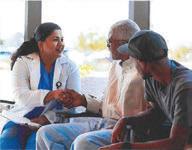
• Your loved one has a serious illness with a life expectancy of 6 months or less.
• Curative treatment is no longer the patient’s choice or option, and comfort and symptom management become the main goals.
• You, as the caregiver, no longer have the ability- either through lack of time or lack of expertise - to provide the substantial and sustained care that your loved one needs.
• Your loved one wants to relieve you of having primary responsibility for caregiving, but still wants to receive a high level and quality of care.
Understanding Your Options
If you have a life-limiting illness such as heart or lung disease, dementia or cancer, palliative care programs offer you a specialized treatment option that combines advanced management of pain and symptoms, with enhanced quality of life for you and your family. Like hospice, palliative care can include pain management, help with understanding care options towards the end of life, help at home, and emotional support for patients and for loved ones. Palliative care can apply over a period of weeks, months, or even

Preparing for Hospice Care
How does hospice work? Hospice focuses on care, not cure, and is designed to let patients decide where and how they want to spend the rest of their lives. When properly and fully utilized, hospice often enables patients to spend their final days at home rather than in hospitals, and eases the emotional and financial burden on patients and families.
Quality hospice care should make the patient’s remaining life as comfortable and meaningful as possible. This can mean pain and symptom management, nursing care, spiritual and emotional support, and help with everyday activities.
possible, care should travel to the patient - in his or her assisted living facility, nursing home or private residence - not vice versa. Planning and ongoing provision of care should always include the patient’s personal doctors.
Comprehensive Hospice care should be managed by a team of professionals who attend to the patient as a whole person: not just physical but emotional and spiritual needs. Care should also be extended to the patient’s family caregivers and other loved ones, as they share the patient’s journey.
years, and can work alongside a long-term treatment plan that aims at patient recovery and healing. If you are unsure about which option is best, either for yourself or for a loved one, Capital Caring Health can help. You may speak with one of our navigation specialists 24 hours a day, 7 days a week to discuss your options. Call us at (800) 869-2136.
Even if it’s not time for hospice yet, understanding the choices and having a plan can reduce stress and help everyone feel better.
Quality hospice care usually features three key characteristics: Flexible Hospice should emphasize the patient’s right to decide, and how to respect and satisfy the patient’s wishes. Whenever
Prioritizing comfort and pain management
Minimizing pain and discomfort is a major priority of hospice care. Medication, care and procedures to control pain should be an integral part of each patient’s care plan.
IS HOSPICE LICENSED AND REGULATED?
Hospice agencies must be licensed by their respective states, and comply with federal regulations in order to quality for Medicare reimbursement. The National Hospice and Palliative Care Organization has developed “Standards of Practice for Hospice Programs,” which define quality of care for the industry.
Capital Caring Health and other not-for-profit providers offer four levels of care, by the physicians as part of your plan of care.
1 Routine Home Care is intermittent care provided at your residence, in a skilled nursing facility, or another setting you consider “home.”
2 Crisis Care is provided in your home on a short-term, time-limited basis when the physician and care team determine you need extra support to manage medical symptoms.
3 Inpatient Respite Care is coordinated, short-term care (five days or less) provided at a contracted facility.
4 General Inpatient Care is coordinated care provided at one of our inpatient centers or a contracted facility on a short-term, time-limited basis when the physician and care team determine you need extra support to manage medical symptoms.
HOSPICE CARE IS A FREE COMPREHENSIVE BENEFIT
Hospice is covered by private insurance and by Medicare and Medicaid. Many people do not know that hospice is a covered benefit under Medicare. Most hospice patients have their costs covered through the Medicare Hospice Benefit, which covers end of life care for up to six months or longer.
Who Provides The Care, and Where?
Hospice care is delivered by a team of providers, each of whom is trained to deal with one or more of the patient’s needs. This team creates and executes the care plan, and also adjusts the plan if necessary.
At Capital Caring Health and other not-for-profit hospice providers the team usually consists of:
• Patient and family
• Hospice Physician
• Your Physician
• Nurse
• Certified Nursing Assistance
• Social Worker
• Chaplain
• Volunteers
• Bereavement Counselors
The number of visits to the patient depends on patient needs. Home health aides, who provide personal care to the patient, visit most frequently. Hospice volunteers are generally available to provide services such as running errands, preparing light meals, providing companionship to the patient and lending emotional support to the patient and her loved ones.
HOW DO I ARRANGE FOR HOSPICE?
Anyone can initially refer a patient to hospice — a physician, nurse, social worker, clergy, family, friends, or the patient.

Contact Capital Caring Health’s toll-free, 24/7 Care Line at (800) 869-2136 to speak with a referral specialist who can answer all of your questions. For areas outside of our service area call (844) 438-6744. Information regarding the patient’s diagnosis and prognosis will be requested of the attending physician. Capital Caring Health will arrange a meeting with the patient and family to discuss hospice care and services.
The Six Point Not-For-Pro
Why select Capital Caring Health or another Non-Profit Hospice Provider?
• We care for all regardless of ability to pay. No one is ever turned away.
• We make our care decisions at the bedside, not in the boardroom.

• Dedicated Medical Teams including social workers that make house calls and alleviate patient and family stress.
• Free and comprehensive Bereavement Counseling for as long as required for adults and children.
• We are available around the clock every day of the year — even on holidays.
• Our dedicated and specially trained volunteers can add to comfort care in many ways for patients and their families.
Log on to capitalcaring.org/hospice for additional resources and more information. It has been proven again and again that the sooner a loved one is enrolled in
areas outside of DC, Maryland, and Virginia call: (844) 438-6744
When a loved one dies, use this checklist
Dear Savvy Senior,
What steps need to be taken after a loved one dies? My 71-yearold uncle, who’s divorced with no children, has terminal cancer. He’s asked me to take care of his affairs, so I would like to find out what I need to do after he passes away.
—Unsure Nephew Dear Unsure,
I’m very sorry to hear about your uncle. The death of a loved of can bring about a host of different tasks and responsibilities.

By Jim Miller
Here’s a list of some things you can do now, and after his death, that can help keep a sad event from becoming even more difficult.
Before death occurs
There are several tasks you can do now, while your uncle is still living, that will make things easier for you after he dies.
For starters, find out where he keeps all his important papers, such as his trust and/or will (also make sure it’s updated), birth certificate, Social Security information, life-insurance policies, military discharge papers, financial documents, and key or combination to a safe deposit box or a home safe.
Also make a list of his “digital assets” (including usernames and passwords) such as his email account, online banking accounts, social media accounts, etc.
If your uncle doesn’t have an advance directive, help him make one (see CaringInfo.org for free state-specific forms and instructions).
An advance directive includes a living will that specifies his end-of-life medical treatments, and appoints a healthcare proxy to make medical decisions if he becomes incapacitated.
In addition, you should prepare a do-not-
resuscitate (DNR) order, if that is his wish. Your uncle’s doctor can help you with this. You should also pre-arrange his funeral, memorial service, and burial or cremation.
Immediately after death
Once your uncle dies, you’ll need to get a legal pronouncement of death from a medical professional. If no doctor is present, you’ll need to contact someone to do this.
If he dies at home under hospice care, call the hospice nurse, who can declare his death and help facilitate the transport of the body.
If he dies at home without hospice care, call your uncle’s doctor. You’ll then need to call the funeral home, mortuary or crematorium to pick up the body.
If your uncle is an organ or tissue donor, contact the funeral home or the county coroner immediately.
Within a few days
If funeral plans were not pre-arranged, you’ll need to make arrangements and prepare an obituary.
If your uncle was in the military or belonged to a fraternal or religious group, you should contact those organizations too, because they may have burial benefits or conduct funeral services.
You should also notify family members and friends, and make sure his home is secured.
Up to 10 days after death
To wind down your uncle’s financial affairs, you’ll need to get multiple copies of his death certificate, which are typically ordered by the funeral home.
If you’re the executor of your uncle’s estate, take his will to the appropriate county or city office to have it accepted for probate. And open a bank account for your
What to say to a dying person
Too many of us have wistfully reflected at a funeral or memorial service how we wished the deceased were still alive to hear the tributes.
If you are caring for a dying loved one and haven’t yet thanked that person for all she has done for you, do it before the opportunity slips away. Talk about happy memories, how much you love her, and how grateful you are that she has been in your life and for all she has done for you. Speak from the heart, open up, and reveal your most loving thoughts. Be engaged, be empathic and lis-
uncle’s estate to pay bills, including taxes, funeral costs, etc.
You also need to contact your uncle’s estate attorney if he has one; tax preparer to see if estate or final income taxes should be filed; financial advisor for information on financial holdings; life insurance agent to get claim forms; his bank to locate and close accounts; and Social Security, the VA (if he’s a veteran) and other agencies that provided benefits in order to stop payments.
You should also cancel his credit cards, delete or memorialize his social media accounts and stop household services like utilities, mail, etc. His home and personal belongings will also need to be dealt with in the coming weeks.
Dear Savvy Senior, What kinds of legal documents do I need to help my family take care of me in my elder years? I would like to get my affairs in order but could use some help.
Dear Approaching,
—Approaching 80
All adults, especially an older adult like yourself, should have at least five legal documents to protect yourself and your family. These documents will make sure your wishes regarding your estate are legal and clear and will help minimize any conflicts and confusion with your family and your health care providers if you become seriously ill or when you die.
Here are the key documents you need, along with some tips to help you create them.
Durable Power of Attorney: This document allows you to designate someone you trust to handle your financial affairs if you become incapacitated.
Advance directive: This includes two documents that spell out your wishes regarding your end-of-life medical treatment. The two documents are a “living will” which tells your doctor what kind of care you want to receive if you become incapacitated. And a “healthcare power of attorney” (or healthcare proxy), which names a person you authorize to make medical decisions on your behalf if you’re unable.
to family, friends or a charity. It also allows you to designate an executor to ensure your wishes are carried out and allows you to name guardians if you have dependent children.
In addition to a will, if you own real estate or have considerable assets, another option you may want to consider is a “revocable living trust.” This functions like a will but allows your estate to avoid the time and expense of probate (the public legal process that examines your estate after you die) and helps ensure your estate’s privacy.
HIPAA Release: This form gives your healthcare provider permission to discuss your medical care and medical bills with those you designate. You may need specific HIPAA release forms for each medical professional or healthcare establishment you deal with.
Do-it-yourself or get help
If you have a simple estate and an uncomplicated family situation, there are doit-yourself resources that can help you create all these documents for a few hundred dollars. Some top-rated options to consider include Quicken WillMaker & Trust software (see WillMaker.com), Trust & Will (TrustandWill.com) and Legal Zoom (LegalZoom.com).
If, however, you want or need assistance or have a complicated financial situation, blended family or have considerable assets, you should hire an attorney. An experienced lawyer can make sure you cover all your bases — especially when writing a will or living trust — which can help avoid family confusion and squabbles after you’re gone.
Costs will vary depending on where you reside, but you can expect to pay somewhere between $500 and $2,000 for a basic estate plan that includes a will, power of attorney and advance directive. If you want your estate plan to include a living trust, that can run anywhere between $1,500 and $5,000.
The National Academy of Elder Law Attorneys (NAELA.org) and the National Association of Estate Planners and Councils (NAEPC.org) are two good resources that have directories on their websites to help you find someone in your area.
ten intently if the dying person can speak.
Thank the person for what he has meant to you. Express how he has enriched your life. Tell the person that you will pass on the values and stories you learned from him to others and that the person will not be forgotten. Expressing gratitude to a person is too often done solely in a heartfelt eulogy. But we must express appreciation before loved ones die and when they can still hear and understand.
Excerpted with permission from Achieving a Good Death by Chris Palmer
To complement your advance directive, you should also consider getting a Physician Orders for Life-Sustaining Treatment; see POLST.org. This is a state-specific form that your doctor would fill out that translates your end-of-life wishes into medical orders.
A will: This lets you spell out your wishes of how you’d like your property and assets distributed after you die, whether it’s
If money is tight, check with your state’s bar association (see FindLegalHelp.org) to find low-cost legal help in your area. Or call the Eldercare Locator at 800-677-1116 for a referral.
Send your senior questions to: Savvy Senior, P.O. Box 5443, Norman, OK 73070, or visit SavvySenior.org. Jim Miller is a contributor to the NBC Today show and author of The Savvy Senior book.
SAVVY SENIOR
A safe space to talk about the end of life
By Margaret Foster
Who will take care of my pets when I die? Who will make decisions for me if I’m unconscious? And what kind of funeral do I want, if any?
These are just some of the practical questions that come up at regular gatherings — known somewhat tongue-in-cheek as “death cafés” — intended to help people honestly talk about the touchy subject of their own death.
“Even though we all have a 100 percent mortality rate, less than 35 percent of us do any planning,” said Gail Rubin, an author who held one of the first death cafés in the country in 2012 and is today one of their main proponents. “Funerals are the parties no one wants to plan,” she said.
Death cafés originated in Switzerland, where the late sociologist Bernard Crettaz established the first Café Mortel in 2004 to destigmatize the topic of death.
Inspired by a newspaper article about Crettaz, British web developer Jon Underwood began hosting teas to talk about mortality in 2011.
Today, these one- to two-hour gatherings are held all over the world. The format varies, but there’s often food, questions, discussions and an exchange of ideas or tips. They take place in restaurants, breweries, cemeteries (including D.C.’s Congressional Cemetery), private homes, parks and virtually over Zoom.
“In order to call yourself a death café, you have to follow certain rules: not try to sell anything, offer refreshments, etc.,” said Rubin, who has held one almost every month for more than a dozen years. About 30 people typically attend hers, she said.
Once people get over the initial discomfort of talking about death, “there’s actually a lot of laughter at these gatherings,” she said.
Gatherings in this area
There are several death cafés that meet regularly in our area.
“My death cafés are getting more and more people every month,” said Patricia Dubroof, director of community relations of Assisting Hands of Potomac. She has
been hosting the gatherings, both in-person and on Zoom, for six years.
“Death cafés are an opportunity to chat about all the ‘what ifs,’ and get really practical information — on death doulas, legal help, financial planning, insurance and so many pieces,” she explained. “Just because your loved one dies doesn’t mean you’re an expert on all those things.” [For more about death doulas, see this month’s cover story.]
Sometimes it’s easier to talk to strangers about your final hours than to your own family, Dubroof said. You can discuss what kind of music you’d like to hear, for instance, or whether you want a funeral service, and if so, what kind.
“It’s not only about writing it down; it’s about talking about it — and it doesn’t have to be a macabre conversation,” she said. “We’re not going to live forever, so let’s open the conversation. The more we talk about it, the less weighted it gets.”
Rubin points out that the more we plan, the less work we leave to our grieving family and friends. She recently lost her mother,
husband and several other family members.
“They had already paid for their funerals. That took a lot of burden off my shoulders,” she said.
Making fun of death
Rubin graduated from the University of Maryland with a degree in communications and film.
While there, Rubin created a satirical film of the Grim Reaper playing chess with a knight. The film “predicted that I would be making fun of death, and that’s [become] my raison d’etre. It’s the thing I was born to do,” she said.
Rubin also organizes an annual festival to encourage conversations about death. This year’s festival, — the Before I Die Festival — was held last May in Albuquerque, New Mexico.
Both the festival and monthly gatherings are a way, as she puts it, to gather with others to simply “talk about what’s on your mind about mortality issues.”
To search for a death café in your area or to learn how to host one, go to deathcafe.com.
Entrepreneur turns grief into guidance
By Ana Preger Hart
When Adam Zuckerman’s father died suddenly of a leukemia relapse just 12 days after a visit to the hospital, Zuckerman found himself crushed by grief — and overwhelmed by paperwork.
“What I realized was, paperwok takes a lot more time than I thought it should, the process is pretty complicated, and I’m not the only person who’s gone through it,” he said in an interview with the Beacon
That experience — of managing the dozens of financial, legal and personal tasks that follow a loved one’s death — was the seed for Buried in Work, the online resource center he founded soon after.
“It’s a tongue-in-cheek, punny name. Our logo’s a coffin, if you look at it really closely. My dad had a really crazy, funny sense of humor,” Zuckerman said.
What began as a website chronicling his own experience has grown into one of the most comprehensive digital platforms for end-of-life planning and estate administration. Buried in Work now offers free tools, guides and checklists for individuals navigating the complex logistics of death.
Zuckerman’s message is clear: preparing for the inevitable doesn’t have to be overwhelming.
“A lot of what happens from estate planning to end of life to aging in place…it’s all connected on a spectrum,” he said. “But that pathway is different for everybody because you’re unique — just like everybody else.”
How the website helps
The Buried in Work website (buriedinwork.com) is designed to be user-friendly. Within its nearly 175 information hubs are articles covering digital legacy management, how to write ethical wills, and ways to organize financial records. There are checklists and printable guides for executors, caregivers and older adults who are planning ahead.
But Zuckerman and his team don’t stop at forms and file folders. They’ve also created resources that spark emotional conversations, such as the interactive card game One More Story, which prompts users to share meaningful memories and wishes with loved ones.
Zuckerman also produces a podcast. The free ”Buried in Work” podcast interviews attorneys, funeral directors and everyday people who’ve navigated loss, offering both practical advice and heartfelt perspectives. The first episode featured a “coffin confessor,” a person who delivers
(not always pleasant) messages from the deceased at their funeral.
“A lot of people think estate planning — wills, trusts — is really boring,” Zuckerman said. “And we want to show that there’s a lot more than that. Comprehensive estate planning for us is everything in between.”
The goal, Zuckerman said, is to reduce the burden on families by encouraging open conversations before a crisis hits.
“That’s really what we want to do — make it so people don’t have to have those conversations at the end, so they can focus on having the conversations and the questions and one more story…That’s what you need to be focused on: the memories, the legacy, the family heirlooms. Because when somebody passes away, all the stories, all their experiences, unless they’re recorded somewhere, they disappear with them.”
Buried in Work even includes a section
on common mistakes, such as forgetting to update beneficiaries or leaving out online account access, that can derail an otherwise solid estate plan.
A lot of the information on the website is developed in response to the questions Zuckerman has received, because if one person has a question, others will likely have the same one, he said.
“The questions that we get are bizarre and wonderful. So one person asked us, ‘Hey, I’ve got basic information about my family’s history. What do I do to find a grave in the area?’ or ‘Somebody passed away. How do I move a piano?’”
Zuckerman sees it all as a labor of love — born from loss, but shaped by community. “I want to have an inbox of so many people saying, ‘Thank you. You helped us. You made our life easier.’”
For more information, visit buriedinwork.com.
Hospice

What makes Capital Caring Health special among advanced illness care groups?

ITS NOT JUST ABOUT THE END OF LIFE:
Itʼs about a Better Life. Our hospice care provides a better quality of life for patients and family members in the privacy of their homes or wherever they call home. Hospice should be considered for all advanced illnesses when there is a life–limiting prognosis and the focus turns to quality of life.
ADVANCED ILLNESS AND PALLIATIVE CARE:


Capital Caring Health provides specialized medical care for people living with a serious illness that focuses on relieving symptoms and pain. The goal is to help improve the quality of life for both the patient and family.
WE CARE FOR ALL REGARDLESS OF RACE, CITIZENSHIP, OR ABILITY TO PAY: When care isnʼt covered by Medicare, Medicaid, or private insurance, we step in thanks to donations from the community. Capital Caring Healthʼs mission is to provide the highest quality care to the community regardless of the personʼs ability to pay
WE ARE THE ONLY PROVIDER OF SEVERAL INPATIENT HOSPICE CENTERS IN OUR AREA:
When patients and their families need comprehensive, around-the-clock hospice care, they are admitted to one of our two physical facilities in Northern Virginia and Washington, DC. No other hospice group in our service area runs multiple inpatient centers because the annual cost far exceeds insurance reimbursement.
CAPITAL CARING KIDS – SPECIALIZED CHILDRENʼS HOSPICE & GRIEF SUPPORT:
We have the largest Childrenʼs Hospice program on the East Coast and one of five nationwide with a dedicated pediatric medical team. Our team works to provide the best possible daily care and to extend the lives of gravely ill kids for as long as possible. Additionally, we provide grief support to children dealing with loss at no cost to their families.


A SPECIAL FOCUS ON IMPROVING THE LIVES OF PEOPLE WITH DEMENTIA: Many patients and Veterans face some form of dementia. Capital Caring Health provides Robotic Companion Pets which have been clinically proven to provide joy and comfort.
COMMUNITY GRIEF SUPPORT AND BEREAVEMENT COUNSELING:
We provide Bereavement Counseling Teams to anyone in our service area who needs support after the loss of a loved one at no charge
Community Impact:
Capital Caring Health is proud to provide more than $3 million in charitable care and grief support annually at no cost to the community.
Money Law & Annuities provide guaranteed income
By Donna Fuscaldo
Annuities, a type of guaranteed income, can give you peace of mind in retirement. After all, having an annuity means you can count on a payment arriving regularly, regardless of how the stock markets are performing.
But is an annuity a must-have? Some 401(k) plan sponsors, insurance companies and money managers think so, but not every financial pro is on board with that assessment.
That’s what Cerulli Associates, the wealth and asset management research firm, found when it recently polled asset managers. In 2019, 42% of asset managers believed a retirement income solution needed a guaranteed component to be effective, but in 2024, only 37% believed that to be true.
The slight shift in sentiment comes as annuities are finding their way into more 401(k) plans, thanks to SECURE Act 2.0. On the books since the end of 2022, the Act enables annuities to be included in 401(k)s. The idea is to create a lifetime guaranteed income stream for retirees.
While annuities have fans, including among retirement savers, the complexity,
fees and nuances associated with this type of financial product are leaving some financial advisers questioning if they’re necessary.
“If you look at the results of the survey over five years, there’s more doubt whether or not it’s actually a necessity,” said Idin Eftekhari, senior analyst at Cerulli. “Some folks are now looking at it as it’s nice to have, not a need to have.”
Is it worth it to give up liquidity?
A big knock on annuities, said Eftekhari, is the fact that you forfeit liquidity when you put money into an annuity. To fund an annuity, you either invest a lump sum or make a series of payments over time, and in exchange, you get paid out at a later date.
Once the free look period, or the window in which you can cancel the annuity, expires, which is typically 10 to 30 days, you can no longer access that money without paying penalties and fees.
But if something comes up in retirement that requires you to access a significant amount of capital, you can’t touch the annuity. That means you’ll have to tap your
savings or draw down from other retirement accounts. The less money you have in, say, a 401(k) or IRA, the less opportunity you have to benefit from growth and compounding.
Plus, Eftekhari said a lot of annuities don’t have inflation protection, which means the money you put in today may not be worth the same amount in five, 10 or 20 years when you begin receiving payments. There are annuities that offer inflation protection, but they tend to be more costly. “If most participants were truly educated about what they are getting, they would probably say no, thank you,” said Eftekhari.
Are the fees worth it?
Another factor to consider when it comes to annuities: the associated fees. Depending on the type of annuity and extra bells and whistles, fees can range from 1.5% to 4% on average. Within a 401(k) plan it can be difficult to determine the fees. Over the years those fees can add up and take away from your returns.
“Annuities tend to be quite expensive,” said Jane Delashmutt O’Mara, a certified financial planner at FBB Capital Partners.
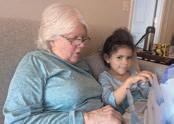
Before leaving an IRA to heirs, fill out the beneficiary form, not just a will. See story on page 25.
“If there are any products out there that guarantee something, they come with a price tag. You have to understand what you are paying for and what the price tag is.”
That’s not to say annuities don’t make sense for some individuals. If someone wants to spend down assets to qualify for Medicaid, doesn’t want to invest in the stock markets, or has won a lawsuit or the lottery and has a large sum of cash, then an annuity can make sense, said O’Mara. But an annuity should be part of an overall financial plan, not the only component, she said. An alternative to an annuity is to build a portfolio of bonds or a bond ladder that generates income each year as the bonds mature, said O’Mara. Spread out over years, bonds can give predictable income in retirement.
There is a place for guaranteed income
Rick Sweeney, director of insured solutions at RBC Wealth Management, said many clients are worried about outliving their savings, and some will turn to an
With AI, scammers have more ways to deceive
By Walt Houser
Late at night, while watching television at home, your cell phone suddenly lights up with a FaceTime call. On the screen, you see the tear-streaked face of your beloved grandchild, visibly distressed and pleading for your assistance. She explains that she’s in a foreign country in trouble, desperately needing money for bail. She implores you to keep this situation secret from her parents because she’s embarrassed and ashamed about her predicament.
Then a supposed lawyer joins in, emphasizing the situation’s urgency. You’re told that $50,000 is needed for bail within two hours or your grandchild will face conviction and imprisonment. The attorney directs you to a nearby ATM offering cryptocurrency.
Despite the late hour and mounting financial strain, you reluctantly comply, maxing out credit cards to ensure the funds reach the individual promising to secure your grandchild’s release from their perilous situation.
The following day, you call your chil-
dren to let them know what you have accomplished to keep your granddaughter safe. They reply, “Of course she’s safe: She’s here right now!” A tide of confusion and fear washes over you.
Scammers specialize in preying on our emotions. When you receive an email or text message from a friend or relative requesting financial assistance, it’s crucial to pause and consider: Is the person on the other end truly who they claim to be?
These scams often start with a phone call, video call or email. The caller might claim to be a family member facing legal trouble, medical emergencies, or unexpected travel expenses. They’ll insist that you keep their request for help a secret.
They’ll often request payment through wire transfers, cash pick-ups or even gift cards. These payments are hard to trace and nearly impossible to recover.
Warning signs
Look out for inconsistencies in the
caller’s story, such as changes in details or vague information about their identity.
Take the time to verify the caller’s identity by asking personal questions that only the actual family member would know. If you have any doubts, contact the alleged victim or another family member to confirm the situation. It’s smart to establish a “safe word,” or verbal password, with your family to signal the legitimacy of a call.
Staying calm and collected is crucial. Resist the urge to act impulsively. Take a moment to think critically and assess the situation before making any financial transactions.
Unfortunately, with the advent of artificial intelligence (AI), scammers can sample the internet for short clips of family and friends on social media to create convincing deceptions. Be cautious of unexpected video calls or messages that seem out of character, and always verify the caller’s identity before taking any action.
What to do after scam
If you or a loved one falls victim to one of these scams, report the incident to local law enforcement and provide as much detail as possible about the scammer. If you you’ve been the victim of a fraud like this, call your local police department’s nonemergency number.
If money was transferred, contact the bank or financial institution to report the fraudulent transaction. Organizations specializing in fraud and scams can help you navigate the aftermath. For further information, see montgomerycountymd.gov/pol/fraud/reportingfraud.html.
To learn more about preventing fraud, visit montgomerycountymd.gov/pol/fraud/financial-crimes-section.html.
If your Montgomery County religious, social or civic group wants a free presentation on how to avoid scams, contact the county police department at (301) 279-8000. Walt Houser is a volunteer with the Montgomery County Police Department.
In economic rollercoasters, try CD ladder
By Sean Jackson
Things might be changing soon for savers. Kiplinger Investing for Income editor Jeffrey Kosnett recently said, “You might be wise to lock in Treasury-bill and CD ladders sooner rather than later.”
The reason? Rates on CDs are still high, with many terms earning you over 4%. However, those rates might be coming down in the future if the Fed decides to cut interest rates.
And that’s becoming more of a reality. CNBC conducted a survey of economists, fund managers and analysts, and 65% believe a rate cut will happen this year on account of a wobbling economy. This is up from 44% in March, so it’s clear a shift is starting to happen.
If a rate cut happens, it means you only have a narrow time to lock in a higher rate of return. Take a look at how a CD ladder allows you achieve long-term financial growth, with the flexibility to pivot investments as you see fit.
How does a CD ladder work?
A CD ladder is a savings strategy where you don’t put all of your eggs into one basket. You essentially open multiple CD accounts, but not at the same time.
To demonstrate, say you have $100,000 to devote to savings. You could put it all in a jumbo CD and earn 4.50% with some accounts. But what if you want to diversify?
With a CD ladder, you would instead spread your investments out, like this:
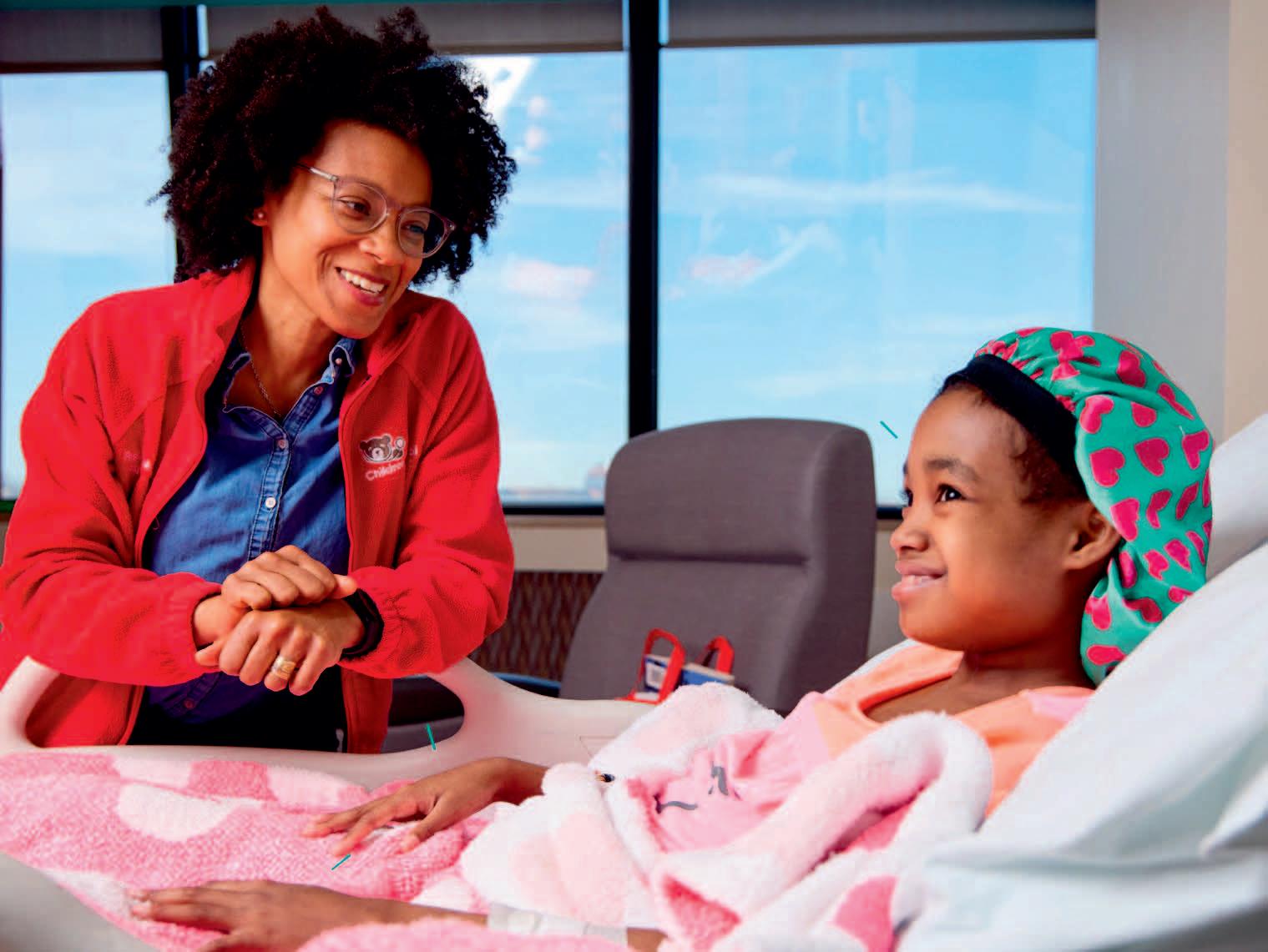
$20,000 in a one-year CD
$20,000 in a two-year CD
$20,000 in a three-year CD
$20,000 in a four-year CD
$20,000 in a five-year CD
The goal of this approach is to stagger maturity dates. That way, you have access to some cash if you need it, while also having the flexibility to take everything earned on a CD and reinvest it to continue climbing the ladder.
The other benefit of a ladder is there’s
Some
not one specific way to do it. You could start with a few CDs to see how you manage and continually add more from there. That also gives you opportunities to see where rates stand in a moment of uncertainty.
What to consider with a CD ladder
A CD ladder requires more maintenance than a normal CD. As you approach one maturity date, you’ll have to decide








Tamara Sperling
Annuities
From page 21
annuity to protect against that. In addition to guaranteed lifetime income, some clients purchase annuities to give them downsize protection.
Typically the annuities are part of a welldiversified plan that includes different streams of income, he said.
“Annuities are not well suited for everybody,” adds Eftekhari. “When you are sitting down reviewing the paperwork (with annuities), it’s at least a 40- or 50-page contract you are signing with the insurance company. Most people don’t have time to
CD ladder
From page 22
what to do with your cash from there. And the more CDs you have, the more you’ll have to do this.
Some banks and credit unions will automatically renew your CDs unless you set a plan with them. Therefore, make sure to set a reminder on your phone a few weeks before the maturity date, as it will give you ample time to research whether to keep your money in one or try another option.
Another thing to keep in mind is inflation. While you can earn a good rate of return on a five-year CD now, we also don’t know how the trade wars and other policies will impact inflation moving forward. If inflation does rise enough, it would
June 17
read the fine print, only to realize after the fact what they purchased.”
A balanced approach
Ultimately the best approach may be a balanced one, where you have a little bit of everything. That’s the case for clients at Boldin, the maker of financial and retirement software.
Of the company’s 41,000 PlannerPlus subscribers, roughly 3,000 have 100% of their expenses in retirement covered through guaranteed income. The average expenses covered by guaranteed income is 54%. That is typically derived from Social Security, pensions and annuities.
lower the purchasing power on what you earn with a CD.
On the other hand, if the Fed does cut rates sometime this year, it’s vital to start your CD ladder sooner than later to take advantage of the higher rates.
Now is an excellent time to start a CD ladder, especially if there might be rate cuts later this year. With a CD ladder, you’ll be able to diversify your savings to help you reach your goals.
This approach also gives you a chance to change up CDs as you need to maximize savings. Just remember to set reminders on when each CD matures, as it gives you time to decide where to park your cash next.
© 2025 The Kiplinger Washington Editors, Inc. Distributed by Tribune Content Agency, LLC.
50+ VIRTUAL EMPLOYMENT EXPO
If you are 50 and over, JCA invites you to attend a virtual Employment Expo on Tue., June 17 from 10 a.m. to 3 p.m. on Zoom. Whether you were affected by the layoffs or just looking for your next gig, you can register for free at VirtualExpos.AccessJCA.org. For more information, email EmploymentExpos@AccessJCA.org or call (301) 255-4209.
Peace of Mind is Priceless



“What people try to do is have enough guaranteed income to cover necessary expenses like food, housing, insurance, healthcare and transportation, and use their investment portfolio for fun money such as travel, entertainment and gifting,” said Nancy Gates, lead educator and financial coach at Boldin. “The most important thing is to have a long-term financial plan tailored to your personal circumstances.” © 2025 Kiplinger Consumer News Service. Distributed by Tribune Content Agency LLC.
BEACON BITS
June 16
CAREER EXPO FOR FORMER FEDERAL EMPLOYEES
University of Maryland Global Campus will host New Horizons: Career Expo for Former Federal Sector Employees on Mon., June 16 from 11 a.m. to 2 p.m. at the College Park Marriott Conference Center, 3501 University Blvd. E, Adelphi, MD. Attendees can meet with recruiters from top employers in IT, finance, HR, cybersecurity and more, and explore UMGC programs to support new career paths. This event is free with free onsite parking. For more information and to register, visit umgccareerexpo.vfairs.com.

BEACON BITS
I’m a Seniors Real Estate Specialist® who is steeped in knowledge and experience. My unique marketing and master negotiating skills are wrapped up in kindness, honesty, and protective care. I guide you in how to sell for top dollar while supporting you with the very best resources. Whether you want to remain in your home, or move to a retirement community, I am the Realtor® you want to call.
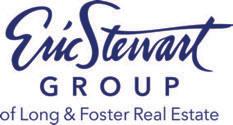




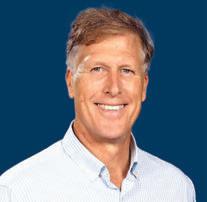
For your free copy of my “Rightsizing Guide” or my “Senior Living Guide,” download them from the “Resources” section of EricStewartGroup.com or call me directly at (301) 252-1697 for a personal consultation on your real estate needs.


The importance of naming beneficiaries
Unfortunately, when a retirement plan owner or beneficiary makes an error regarding naming beneficiaries or managing his account assets, the result can be a loss of hundreds of thousands of dollars that don’t go to the beneficiary of their choice.
If you are the owner of a retirement plan with significant assets, it is crucial that you make your decisions regarding naming beneficiaries and managing these assets with the advice of a welltrained financial planner. It is too easy to make a costly mistake. In this column, I will address many of the ways in which costly mistakes can be avoided.
IRA forms supersede wills

named son and 50% to a named daughter. Naturally, if one of your named beneficiaries predeceases you, immediately revise the beneficiary form and specify the new beneficiary, as well as the new contingent beneficiaries.
By Elliot Raphaelson
When your situation changes, such as a remarriage, immediately update the beneficiary form, not the will. Changing the terms of the will is not relevant. If you remarry and fail to revise the beneficiary form, after your death, the assets will go to whoever you specified on the form.
Elliot Raphaelson welcomes your questions and comments at raphelliot@gmail.com. © 2025 Elliot Raphaelson. Distributed by Tribune Content Agency, LLC.
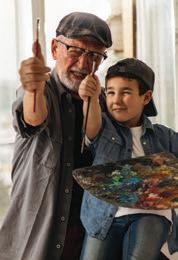
For estate planning, probate, trust administration, contested estate litigation and so much more, knowing where to turn for the right advice can make all the difference in preserving your legacy. When you need us, we’re here.
Paul Riekhof P: 240-399-7899 F: 240-553-1744
priekhof@jgllaw.com

Many IRA account owners do not understand the importance of the IRA beneficiary form. This is the document that controls whether your chosen beneficiary will receive the assets you want them to receive.
Many retirement account owners believe that they can name the beneficiary of their IRA in their will. That is wrong! Even if you name beneficiaries in your will, it has no relevance. Only the beneficiaries named on the IRA beneficiary form will be the recipients of your IRA assets.
If you don’t specify your beneficiaries on the IRA beneficiary form, then the result will be the same as not naming a beneficiary at all. In that case, your IRA assets will be part of your estate and become probate assets, which will be distributed according to state law.
When you specify your beneficiaries on the beneficiary form, make sure that the total amount of your assets you specify adds up to 100%.
For example, if you have more than one beneficiary, you should specify the percentage each should receive. If the total does not add up to 100%, then the beneficiaries will not receive what you intended.
Contingent beneficiaries
It is also important to specify “contingent” beneficiaries. So, for example, if you name your surviving spouse as the beneficiary of 50% of your IRA, specify who would receive the assets if your spouse predeceases you.
You should specify the percentage that the contingent beneficiary would receive. For example, you would specify that 50% of your wife’s inheritance would go to a


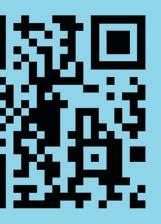

Leisure & Travel Leisure &

Maui’s beauty comes with a mellow vibe
By Sandi Barrett
The laid-back vibe on Maui might be the perfect antidote to the frantic hustle of our everyday world: sunshine, beaches, lush tropical plants and exotic flowers.
My husband, Chris, and I spent some time on Maui last winter, our first visit since the Lahaina fire. While downtown Lahaina is open only to local residents, there are reassuring signs of a slow recovery. Most places in West Maui have reopened to tourists.
Visitors can venture out and explore the island on a drive, stopping to take in the views, or go for a hike. In one day, you can see humpback whales breaching and then snorkel with brightly colored fish in undulating hues of blues and yellow.
Whether you simply relax at the beach, enjoy some on-the-water adventures, golf or hit the hiking trails, Maui should be your next bucket-list vacation spot.
Haleakala National Park
Hiking is one of the best ways to explore the natural beauty of a place, and Haleakala National Park offers intrepid hikers otherworldly views. From deep valleys to rocky outcrops, winding trails lead you through a panorama of shapeshifting colors and textures.
We hired a guide for our Haleakala exploration. An in-the-know local dedicated to ensuring that your adventure is enjoyable and safe lets you focus on the experience. Plus, a great guide knows all the best spots, so you won’t waste time and energy getting lost.
The most spectacular trail is the Keonehe’ehe’e (Sliding Sands) Trail. The 11mile trek is a wonder of changing landscapes, from tropical to desert. Of course you need not hike the entire length; you can park at various spots and hike small, manageable sections. Near the summit, the alpine desert is breathtaking and worth the short, strenuous stroll.
Whale watching
It’s always rewarding when you can help the environment and have fun at the same time. A sail with PacWhale Eco-Adventures supports the nonprofit Pacific Whale Foundation and contributes to saving Hawaii’s humpback whales. The company’s Adult Sunset Sail is a relaxing, enjoyable evening on the water. It’s BYOB but includes a delicious selection of pu¯pu¯ (appetizers).
Of course, the stars of the evening are the whales. In the winter months they show off their best mating moves — like a

dance club pick-up scene with males vying for attention.
Nakalele Blowhole

The fascinating rugged coastline on the northern tip of Maui is home to the Nakalele Blowhole. Powerful crashing waves move through an underwater lava tube, creating a geyser that shoots water high into the air.
Beware of getting too close; people have been washed away by the powerful water spout. The AllTrails app lists the Nakalele Blowhole Trail as a moderate, out-andback 1.2-mile trek. The trail is rough and rocky, requiring confident footfalls. You can, however, get a great view of the blowhole by meandering down even 200 yards, thereby avoiding any rock-scrambling.
Take a drive
The infamous Road to Hana is an adventure in mountain driving. A lesser-known traverse is through the Mauna Kah¯al¯awai, the West Maui Mountains. Switchbacks, hairpin turns and one-lane roads add a sense of adventure to your sightseeing.
Many say the white-knuckling West Maui Mountains drive is more unnerving than the Road to Hana. No matter whether you decide to drive east or west, plan to go
early, as there are limited streetlights and guardrails. You don’t want to be driving on these roads in the dark.
Snorkeling and golf
Snorkeling near Molokini Crater was an exciting excursion. Darting fish in an array of vibrant colors kept my head on a swivel because I didn’t want to miss a thing.
Many companies offer snorkeling tours, but we went with PacWhale Eco-Adventures again because I liked that they are a nonprofit working to keep the ocean clean.
Although we snorkeled just once, we golfed almost every day. Hitting the links on Maui makes for a peaceful early morning. I suggest booking tee times that avoid the scorching midday sun so you can enjoy verdant fairways, fast greens, sneaky traps and stunning vistas.
K¯a’anapali Golf Courses include two 18hole courses: the Royal K¯a’anapali and the K¯a’anapali Kai. As you approach Kai’s ninth green, the course view gently slopes into a panoramic water view that just may distract your putting.
At Kapalua Golf you can choose from the Bay or Plantation Course. Kapalua is home to the Sentry Tournament of Cham-
Black Rock Beach in Lahaina in West Maui is one of the island’s most popular spots. At sunset every evening, cliff divers illuminate the lava outcrop with torches, then jump off Black Rock.
PHOTO BY SANDI BARRETT
There’s always something new to see in New York City. See story on opposite page.
Maui or Mars? Haleakala National Park’s Sliding Sands Trail leads intrepid hikers through an otherworldly, volcanic landscape.
PHOTO BY SANDI BARRETT
A classic New York City trip with a twist
By Don Mankin
I love New York. Who doesn’t? The theater, the museums, the music, the food, the subways…well, maybe not the subways.
This past spring, my wife and I had the opportunity to sample it all during a oneweek visit to, in the words of writer Bruce Jay Friedman, the “city of class.”
Of course, we did the usual — a play, a museum, Central Park — but we also explored the far reaches of the city’s outer boroughs in search of the unusual and unfamiliar.
MoMA and Broadway
What’s a trip to New York without a visit to one of its world-class museums? For us, it was the Museum of Modern Art, or MoMA, as it is best known. We wanted to see the special exhibit on the inventive, prototypical New York artist Jack Whitten, an African American who pioneered the use of unconventional materials in his art.
Many of Whitten’s pieces are dedicated to jazz musicians, such as John Coltrane, Miles Davis, Thelonious Monk and Ornette Coleman. An aspiring jazz musician, Whitten mingled with them and others in the 1960s, after he arrived in the city from Alabama. Their experimental, improvisational spirit inspired his art, leading him to create large abstract canvases from complex mosaics made up of cubes of acrylic paint.
The swirling pieces in the exhibit were accompanied by ambient music from the very same musicians who inspired him. A hardcore jazz fan myself, I was transfixed by the art and swept away by the music. It was one of the most profoundly affecting art exhibits I have ever experienced.
As for a Broadway show, we were fortunate to grab a couple of (expensive) seats at the historic Winter Garden Theatre to
see George Clooney in “Good Night, and Good Luck,” a play about Edward R. Murrow and his CBS news team’s confrontation with Sen. Joseph McCarthy during the “red scare” of the 1950s.
I am not a theater aficionado, but there is something about the immediacy of live theater that grabs me every time I see a great play. And this was one of them.
To be honest, I was skeptical that any theater production would be worth the $303 each I paid for seats toward the back of the theater, but I left the theater exhilarated by the outstanding performances, the production and, most of all, by the relevance of the play.
We also took advantage of what little good weather we had to take long walks in Central Park, past its zoo, skating rink, carousel, meadows and lakes. I’ve spent many hours wandering through the park, one of my favorite places in New York, lured down one path or another by a glimpse of blooming trees, a classic 19thcentury stone building or skyscrapers towering above meadows.
Off the beaten path
Few tourists venture out of Manhattan, but this one was willing to endure long subway rides in search of great food.
Our first excursion was to Flushing, Queens, one of the most diverse neighborhoods in the world. Forget Chinatown; this is the new Chinatown — not a tourist destination, but a real community where people work, live, shop and most important (at least to me), eat.
Our destination was the food court in the basement of the New World Mall, one of the biggest Asian malls in North America. A sprawling collection of stalls encircles one row after another of Formica ta-

bles and plastic chairs filled with people chowing down on a variety of inexpensive, authentic Asian delights.
During our hour-long lunch, we consumed some of the best noodles, bao, dumplings and Chinese pancakes I have ever tasted. I estimate that the three of us

— my wife, her sister and I — spent about $35 total. I was stuffed, but not so stuffed to pass up the egg custard tarts and warm sesame balls from the bakery counter. Not only was the food delicious and cheap,















Central Park’s 15-acre Sheep Meadow is a respite from busy Midtown Manhattan.
but the peoplewatching on the streets, in the mall and at the food court made me feel like I was in Shanghai or Hong Kong.
Our other excursion to an outer borough in search of great food was to the Williamsburg section of Brooklyn to a hip
new restaurant, Laser Wolf, named after the character in Fiddler on the Roof. Once known mainly for its tight-knit community of Hasidic Jews, Williamsburg is now a trendy neighborhood of chic boutiques, cafés and restaurants.
The Israeli restaurant serves a main course of skewered meats cooked over a charcoal grill, preceded by an array of ex-
otic sides including Israeli pickles and onions, babaganoush, roasted cauliflower, grilled carrots, Tunisian potatoes, red cabbage and possibly the best hummus I have ever had. The sides were so good, I could have made a meal out of them alone.
Laser Wolf is located on the roof of the upscale Hoxton Hotel, so in addition to the great food, there are views of the Manhattan skyline from almost every table.
My last excursion was to downtown Manhattan to The Stone, a legendary performance space that features the latest music from some of the most creative musicians in the world, including such luminaries as John Zorn, Laurie Anderson and Nels Cline. Formerly a funky storefront on the Lower East Side, The Stone is now housed in a sleek, ultra-modern space on the campus of The New School.
The Stone is dedicated to serious listening. No drinks or other refreshments are available, conversations are discouraged, and patrons are urged to use the bath-
ENTERPRISE RESIDENTIAL
ANNE ARUNDEL COUNTY
The Greens at Hammonds Lane: 410-636-1141
Park View at Furnace Branch: 410-761-4150
Park View at Severna Park: 410-544-3411
BALTIMORE CITY
Ednor Apartments I: 410-243-0180
Ednor Apartments II: 410-243-4301
The Greens at Irvington Mews: 410-644-4487
Park Heights Place: 410-578-3445
Park View at Ashland Terrace: 410-276-6440
Park View at Coldspring: 410-542-4400
BALTIMORE COUNTY
Cove Point Apartments I: 410-288-2344
Cove Point Apartments II: 410-288-1660
Evergreen Senior Apartments: 410-780-4888
The Greens at English Consul: 410-789-3000
The Greens at Liberty Road: 410-655-1100
The Greens at Logan Field: 410-288-2000
The Greens at Rolling Road: 410-744-9988
Park View at Catonsville: 410-719-9464
Park View at Dundalk: 410-288-5483 • 55 & Better
Park View at Fullerton: 410-663-0665
Park View at Miramar Landing: 410-391-8375
Park View at Randallstown: 410-655-5673
BALTIMORE COUNTY (CONT.)
Park View at Rosedale: 410-866-1886
Park View at Taylor: 410-663-0363
Park View at Towson: 410-828-7185
Park View at Woodlawn: 410-281-1120
EASTERN SHORE
Park View at Easton: 410-770-3070
HARFORD COUNTY
Park View at Bel Air: 410-893-0064
Park View at Box Hill: 410-515-6115
HOWARD COUNTY
Park View at Colonial Landing: 410-796-4399
Park View at Columbia: 410-381-1118
Park View at Ellicott City: 410-203-9501
Park View at Ellicott City II: 410-203-2096
Park View at Emerson: 301-483-3322
Park View at Snowden River: 410-290-0384
PRINCE GEORGE’S COUNTY
Park View at Bladensburg: 301-699-9785 • 55 & Better
Park View at Laurel: 301-490-1526
Park View at Laurel II: 301-490-9730
rooms before the performances begin. I was there to see Zoh Amba, a diminutive young tenor saxophonist whose sound belies her small stature: loud, fast and intense. As if to relieve the tension of her cacophonous playing, she at times picked up a guitar to sing sweet, melodious songs that reflect her Appalachian roots.
Yes, New York is the city of class. But it is also the city of far-flung ethnic delights, obscure music and much more. Who knows what I’ll discover the next time I visit?
If you go
Round-trip bus fares to Midtown Manhattan start at $100. Amtrak’s round-trip fares from Washington, D.C. to New York average about $150, but you’ll get a deal if you buy tickets a couple of months in advance. The average price of a hotel is over $300 per night. Thankfully, I stayed at my nephew’s apartment near Central Park. Try to find a deal on Hotwire.com, the website that offers deals on surprise hotels (almost like a blind date).
We ate excellent meals at Momofuku Noodle Bar (momofukunoodlebar.com), the Carnegie Diner and Café (carnegiediner.com/central-park-new-york), The Brooklyn Diner (brooklyndiner.com), Due (duenyc.com) and The Smith (thesmithrestaurant.com/location/lincoln-square).
pions in January, so the course is in pristine shape in February. The Plantation Course is your opportunity to play where the pros swing — it is a bucket list course for every golf aficionado.
If you go
Round-trip flights to Maui start at $440. Maui’s average year-round temperature bounces between the mid-50s and mid70s. For fewer crowds, visit in April, May, September, October or November.
There are so many wonderful places to visit on Maui, and the island is fairly compact, making every corner of the island accessible.
My favorite spot on Maui is the Sheraton Maui Resort & Spa on Ka¯’anapali Beach in Lahaina — it’s the essence of Hawaii. Cozy cabanas encircle a lagoon-style pool with views of the beach. Each evening, the cliff diving ritual off Black Rock closes out the day in spectacular fashion. For the ultimate getaway, stay in the Moana Oceanfront rooms, clifftop suites with panoramic views. When it comes time for sustenance, Duke’s Beach House on North Beach in Ka¯’anapali delivers reasonably priced grub with a premier on-the-beach view. Split an order of Kimo’s Original Hula Pie with your favorite dinner date; it is sublime.
Celebrity and James Beard Award-winning Chef Roy Yamaguchi’s Hawaiian fusion restaurant, Roy’s, is the spot for a celebratory dinner. Located in the clubhouse of Ka¯’anapali Golf Course, the casual-chic establishment plates the best local ingredients with an upscale flair.
Arts & Style


Folger’s ‘Twelfth Night’ brings laughs, sighs
By Lynda Lantz
Director Mei Ann Teo whips up a sparkling production of William Shakespeare’s Twelfth Night, at the Folger Shakespeare Library through June 22. Spun through with song and sexy humor, it’s contemporary but also very much in a tradition Shakespeare’s audiences would appreciate.
From the play’s first arresting moments, as a young woman on a sinking ship is tossed by waves that threaten to overpower her, the production grounds us in the physical and emotional, motifs that carry through the performance.
On the foreign shore of Illyria, Viola (Lilli Hokama) emerges from a shipwreck that apparently drowned her beloved twin brother. Unmoored and in mourning, she disguises herself as a young man, “Cesario,” to enter the service of a local nobleman.
Her employer, Count Orsino (Helen Hayes Award-winner Ayssa Keegan), attracts Viola from the start with his rough tenderness and his all-in passion. In romantic red menswear and a red velvet coat, Orsino resembles a more butch prince.
These looks are an early glimpse of costume designer Olivera Gajic’s couturial fantasy, which is as vivid and maximalist as the set is featureless and concrete. That vision encompasses even the, shall we say, prominent codpieces protecting family jewels and serving as coin purses as well as punchlines.
In the object of Orsino’s desire, Olivia
(Alina Collins Maldonado), Viola meets someone she might share a lot in common with, a veiled woman turning away men as she mourns for her father and brother. But Viola senses a rival who thrives on control.
Despite herself, Olivia is intrigued by young Cesario, who Hokama invests with a virtuous nobility, easily unnerved in his unfamiliar gender, but intent to carry out his task for Orsino.
Strong performances
Olivia’s household includes her fabulous uncle, Sir Toby Belch (Che Kabia). A scuffed-up Morris Day in a leopard-print coat or brocade robe, Sir Toby craves company as much as food and wine. He’s brought along good-humored and thoroughly entertaining Sir Andrew Aguecheek (Hunter Ringsmith), ostensibly to woo Olivia, but this flighty fashion-plate would not know where to begin with the lady.
The pair alternately annoy and join forces with Maria (Shubhangi Kuchibhotla), Olivia’s maid. She’s a vivacious, quickthinking woman, another strong female character in this play who’s not afraid to seize her future even if she has to inflict some pain to do it.
Meanwhile, Viola’s brother Sebastian (El Beh) has not drowned, though he believes Viola has. He is making his way to Count Orsino’s with the assistance of the very devoted and very interested Antonio. The air between them sizzles with lust.







Characters with heart
It will come as no surprise that identities are mistaken. Stirred-up lovers change dance partners, and passions ignite. Characters are sometimes surprised by who they love.
As rowdy and funny as the production is, Director Teo also emphasizes the humanity of Shakespeare’s characters. The












































































In one of the more comic scenes of the Folger Theatre’s production of Shakespeare’s Twelfth Night, El Beh as Sebastian spars with Che Kabia as his uncle, Sir Toby Belch, and Hunter Ringsmith as Sir Andrew Aguecheek. Directed by Mei Ann Teo, the play runs in the Globe-like theater until June 22.
PHOTO BY ERIKA NIZBORSKI





Volunteers honored for decades of work
By Margaret Foster and Ana Preger Hart
For the past 26 years, Montgomery County, Maryland, has honored two older residents with the annual Neal Potter Path of Achievement Award for their lifelong commitment to volunteer work.
The awards, named after former County Executive Neal Potter, are co-sponsored by the Montgomery County Commission on Aging and the Beacon Newspapers.
This year, the county selected Hettie Fleming of Rockville and Anita Segreti of Bethesda. The two women will receive their awards at a public ceremony on Tuesday, June 24, at 6:30 p.m. at the Rosborough Theater at Asbury Methodist Village in Gaithersburg.
Twelfth Night
From page 29
audience sighed audibly when loyal and loving Antonio faced betrayal.
More surprising was the sympathy that Nicholas Yenson’s judgy and preening Malvolio, Olivia’s steward, earned. His willingness to be vulnerable to seek Oliva’s love via a show-stopping moment of choreography, music and costume that would have done Cabaret-era Berlin proud, won
Food, shelter and care
Hettie Fleming is a woman of action, just like her mother was.
Growing up in a large family in Norfolk, Virginia, Fleming watched her mother, who constantly helped others through the local civic league and her church.
“She’d always be looking out for members of her family if there was something they needed, and one of us [kids] would be the one who would bring something to a family in need,” Fleming remembered. “Our house was always open to everyone.”

Fleming worked in IT and telecommunications for 35 years, first in New York and later in Montgomery County. After she retired early from her director job at Verizon, Fleming began volunteering in earnest.
Fleming purchases food and supplies for a program she implemented to secure food, clothing and other necessities for shelters and food pantries. She and her husband, Kenneth, often volunteer together. (They’re deacon and deaconess at their church, Mount Calvary Baptist in Rockville, Maryland.)
She considers her volunteer work a ministry. “We work our ministry together, and volunteering and helping others has been a blessing for us,” she said.
She’s well known for personally delivering “Welcome Home” baskets of household and cleaning supplies to formerly unhoused people when they move into their new homes.
When Fleming brings a basket of food to a person in need, she usually gets a ride from her husband. Her friends, she said, “tease me that he’s my Uber driver. He has a large SUV, so we can pack his car, drop it off and then go on to the next house.” See VOLUNTEER AWARDS , page 32
the audience’s heart. He’s got fantastic legs, let me tell you.
Globe lookalike
The theater, designed to look like the Globe Theater in Shakespeare’s time, is small and multi-leveled. The cooperative work of scenic designer David I. Reynoso, Lighting Designer Minjoo Kim, Projection Designer Hao Bai, and Sound Designer Justin Schmitz ensured that audience members throughout would see and feel



the performance, allowing greater use of the set’s different levels and hidden spaces.
In a shadowed balcony, Erika Johnson, percussionist/music director, brought to life Composer Be Steadwell’s vision of a “sonic landscape” crossing musical genres to thrilling effect. The play veered briefly into the horror genre when the imprisoned Malvolio’s distorted visage was repeatedly reflected across the set.
This production of Twelfth Night is not for children. It includes mature content in-
cluding sexual innuendo, stylized intimacy, adult language and simulated alcohol and tobacco use. The production utilizes haze and strobing lights.
Folger Theatre is located at Folger Shakespeare Library, 201 East Capitol St. SE, Washington, DC. The theater entrance is at the corner of East Capitol and 3rd St. SE, in the newly constructed Adams Pavilion. Anyone over 62 gets a 10% discount. Contact the box office at folgerboxoffice@folger.edu or (202) 544-7077.

Hettie Fleming
Volunteer awards
Fleming serves as committee chair for people in crisis for the Montgomery County Maryland Section of the National Council of Negro Women. She also finds time to volunteer at Montgomery Hospice, Montgomery County Homeless Coalition, Interfaith Works, Community Reach, Stepping Stones, Helping Hands Shelter and support groups for those with sickle cell disease.
The Neal Potter Award isn’t her first, though Fleming emphasized that she doesn’t volunteer for recognition. Her church gave her a humanitarian award in 2020 for her 1,000 hours of volunteer work during the pandemic. She also received the 2021 Outstanding Volunteer of the Year award from the National Council of Negro Women’s Mid-Atlantic Region and a 2025 Volunteer Service Award from Interfaith Works.
If people want to volunteer but don’t know how to start, Fleming says there’s a lot of need out there.
“There are so many things you can do. It
doesn’t always have to be face-to-face; you can make a phone call. Just think, what can I do to help others? To me, that’s what we’re called to do — to reach out to others,” Fleming said. “Everybody has a little extra time to do something.”
Margaret Foster
Serving from the heart, one meal at a time
Anita Segreti didn’t expect that her efforts to improve her children’s school lunches would spark a lifetime of transformative community service. Yet more than 50 years later, she is being honored with the Neal Potter Path of Achievement Award for decades of compassionate, hands-on leadership in Montgomery County.
Segreti’s volunteer story begins in 1971 at the Little Flower School in Bethesda, where she launched the Catholic school’s first hot lunch program. At the time, she was owner and chef at Maria Rosa Italian Restaurant in Bethesda. A priest at the school reached out to her for help with the program.
“He asked me to get it going because I

had the culinary and business experience to do it,” she said.
She did more than get it going — she organized a rotating team of parents, coordinated with vendors and built a system that brought hot soup and pizza to students each week.
That experience led Segreti to reimagine what community meals could be through her work with the So Others Might Eat (SOME) program. Disturbed by the low-quality recipes initially proposed — she calls them “Hamburger Helper recipes” — Segreti challenged her church’s outreach group: “If you invited me to your house for dinner, would you serve me this? Because I certainly wouldn’t serve you that… Why do we have to feed them differently? Why can’t they eat the same kind of food we would serve to each other?”
Everybody wants to help. They just need the opportunity,” she added.
Segreti’s service increased over time. In 2011, she co-founded Transformations of Montgomery County, a nonprofit that furnished apartments for young people aging out of foster care who “had nothing,” she says.
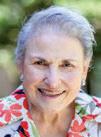
Instead, she organized volunteers to prepare hearty, home-cooked meals for hundreds of people in need. With her restaurant connections and local support, SOME fed 300 people for two days every month, for 10 years, on just $500. They served meals on the last two days of the month because “the end of the month for people on public assistance is the toughest time,” Segreti said.
“You can do this if you just ask people.
With donated furniture from A Wider Circle and coordination with the National Center for Children and Families, the organization created warm, personalized homes for youth facing adulthood without family support.
She’s also a longstanding force in the Catholic Business Network of Montgomery County, where she’s served in multiple leadership roles and helped raise over $1.3 million in scholarships.
Many of Montgomery County’s most meaningful programs have been improved by Segreti’s efficiency and empathy. She has had an enduring impact on the local community.
Still, Segreti approaches each project with determination and humility. “I didn’t do it alone,” she emphasized.
Generations of Montgomery County residents can attest: When Anita Segreti is involved, lives get better.
—Ana Preger Hart

Anita Segreti













































































































































| An Afternoon of E





















































UPCOMING Elegance & Discovery SCHEDULE | Summer Solstice Party rney | Through Love, Lo Faces of Dementia oss, and Resilience a: A Caregiver’s Jour
































































An Invitation to Wellness: Tour. Tastee. Thrive.




End-of-life doulas
From page 1
extension of hospice,” Euler explained.
Think of it this way: Doctors, nurses and even social workers don’t have unlimited time for every patient.
“As much as they would like to sit and talk, they have another patient to see in an hour. So what we give is time and presence with no agenda,” Euler said. “We mirror the person we’re working with.”
The cost varies, but the hourly rate ranges from $30 to $100 per hour. (Medicare covers hospice care but not doulas.) Sometimes a hospice organization partners with a doula group and pays them out of their philanthropy budget.
Some death doulas are volunteers, though. It’s by no means a lucrative occupation. “About 99% of us do it out of love and caring,” Stebbins said.
Training programs
Although death attendants are nothing
new, the field officially emerged in this country about 25 years ago. In 2000, NYU Medical Center and the Jewish Board of Family and Children’s Services started a program that sent five volunteer doulas to visit terminally ill patients once a week.
Later, several certification programs were established, including one at the University of Vermont, which has trained 4,000 people so far. The nonprofit International End of Life Doula Association (INELDA) which has trained more than 2,000 doulas since 2012, including Euler and Stebbins. Other training programs are available both online and in person.
As the number of death doulas grows, more people are enlisting their help to plan their final months.
“Why wouldn’t you want someone to attend to all your needs?” asked Patricia Dubroof, director of community relations of Assisting Hands of Potomac, a home healthcare service.
“There’s a big death-positive movement that’s exponentially accelerating in our
WOMEN’S CAUCUS FOR ART RECEPTION
July 10
Join the Women’s Caucus for Art for a reception on Thu., July 10 from 7 to 8:30 p.m. at Kentlands Mansion, 320 Kent Square Rd., Gaithersburg, MD. Meet artists featured in the Mid-Atlantic Regional Juried Exhibition, running June 27 to October 4. Admission is free; no registration required. For more information, call (301) 258-6394 or email rtgalleries@gaithersburgmd.gov.

area. We’ve gone from having a handful of death doulas to thousands in this country.”
Not necessarily somber Euler, Marie and Stebbins see people at their most vulnerable times, but they see strength and joy, too.
“I sat with one family, and the two daughters are sipping wine [in the presence of their dying mother]. We’re talking family, we’re talking about memories, and it was actually a beautiful moment,” Euler said.
In fact, many people who have witnessed the dying process call it an honor rather than a trauma.
“I like to have people be able to tell the story of their loved one’s death, that it wasn’t tragic; it was beautiful,” Euler said. “It was full of love. It was full of transformation. ‘He was peaceful; she was peaceful’ — a story that’s beautiful as opposed to painful.”
Doulas aren’t just there to help the dying person; they support the whole family and prepare them in advance. They can suggest hospice or homecare companies, explain what to expect at the end, or just listen.
“My mission is to normalize those grief conversations so people aren’t caught off guard,” Marie said. “I want to help people value their life more because they consider their mortality.”
A doula can help smooth the process. Marie recalls one woman who was screaming in pain because her back hurt. So Marie put both hands underneath her body to support her lower back.
Letters to the editor
From page 2




“It gave her comfort, and she fell asleep peacefully,” she said. “Every time I went back, whatever she was going through, I found a way to provide support for her,” singing hymns, playing her favorite gospel songs, and snapping photos of her with her niece.
“I was just there by her side. That gentle presence made a big difference in her life.”
Letting go
Often what people need at the end is release — of secrets, trauma, mistakes, regrets.
“People who have life-threatening illnesses often find a great benefit talking to a relative stranger,” Stebbins said. “They just start to tell us stuff you wouldn’t think you’d share with someone other than your best friend.”
For instance, Euler recalls a visit with a man with advanced prostate cancer. When she arrived, he asked his family to leave the room. Before he died, he wanted to tell someone about the abuse he suffered as a child.
“I’m a listener. I go in with an open heart and a listening ear, and that can be very cathartic,” she said. “We cried. We laughed. He talked for about an hour and a half, and he looked up at me and said, ‘Jane, I think I can put that to rest now,’” Euler said.
“All I did was sit there and be compassionate and listen.”
For more information on finding a death doula or training to become, visit nedalliance.org, deathdoulas.com, inelda.org or learn.uvm.edu/program/end-of-life-doulacertificate. To contact Present for You, visit presentforyou.co or call (703) 401-2778.
over, she told me that she was seriously considering giving it a try. I know that once she does, she will become a full member. More retirees should try it out. There are low membership fees for prospective new members. So many people have told me, “It saved my life.”
Lillian Brooks Springfield, Virginia
Dear Editor:
The article, “Is it dementia, or wasn’t I



like this at 40?” in the May 2025 issue of the Beacon by Leslie Milk brought back memories of a conversation I had with a colleague of mine, a psychiatrist. I asked him about the difference between common episodes of forgetfulness versus worrisome dementia. He said: “Often we all forget where we kept our car keys or cellphones. But when we find them, we know what to do with them. If you cannot figure out what to do with your car keys or cellphone, consult your doctor; that is not normal! It could be the earliest signs of dementia.”
Tonse Raju, MD Bethesda, MD
















BEACON BITS
Nighttime driving: Know when to say when
By Bob Levey
Sometimes old age creeps up on little cat feet. Sometimes it punches you in the eyes.
My baby blues had always been my best ally. They could read the bottom line during the ophthalmologist’s exam, no problem. They could handle the smallest type in the newspaper without glasses.
They even won me a few bucks as a college student. Driving back to campus on interstate highways, with a Volkswagen full of pals, we’d break up the monotony by playing When Can You Read the Distant Road Sign? Five dollars went to the winner. I always prevailed, by several seconds. But three years ago, here came rude reckoning.

By Bob Levey
On this night, I used two. Whenever a truck passed me — and those cowboy truckers were going 80-plus! — the splash on the windshield would blind me temporarily.
But for the first time, something else blinded me temporarily: The lights of oncoming vehicles.
As they approached, their headlights splashed, into a starburst pattern. The splash didn’t last, because the vehicle was soon beyond me. But in the gloom and slop, the headlight splash repeated, time and again, as each vehicle came past me.
If you’ve ever had cataracts, I can see you nodding your head.
the newspaper again. In many cases, they can even drive in nighttime rainstorms again.
But the surgery isn’t safe until cataracts have developed to a certain point. Mine haven’t. So I am firmly in Cataract NeverNever Land. The docs say three or four more years, give or take.
Meanwhile, there is no question that driving at night is much more difficult and dangerous than it once was. I can still do it
in a pinch. But it’s jarring to pilot a car down a two-lane street well after dark — and to hunt hard for the white line that divides my lane from the one coming in the opposite direction.
I am aiming the car, not driving it. Not safe. Luckily, I have a spouse who drives very well, and whose lenses are still cloud-free.
I had attended an out-of-town meeting alone. I was only two hours’ drive from home. It was after 9 p.m., so it would have made sense to crash in a motel room. But why waste money? Two hours was nothing. This road warrior had been licensed for 60 years. Let’s go, big boy.
However, it was one of those nights that only ducks appreciate. Raining, gusting, dark, ominous.
I usually hold the wheel with one hand.
Cataracts are filmy deposits that gather on the lenses of the eyes. They build with age. They can’t be prevented. But they can be corrected surgically — and often are.
In fact, cataract surgery is one of the most successful in modern medicine. According to the American Medical Association, the procedure works safely and effectively more than 99 percent of the time. They remove your “birth lenses” and give you new ones. The reviews tend to be gushing. Patients rhapsodize about how much brighter colors are. They can read the baseball box scores in
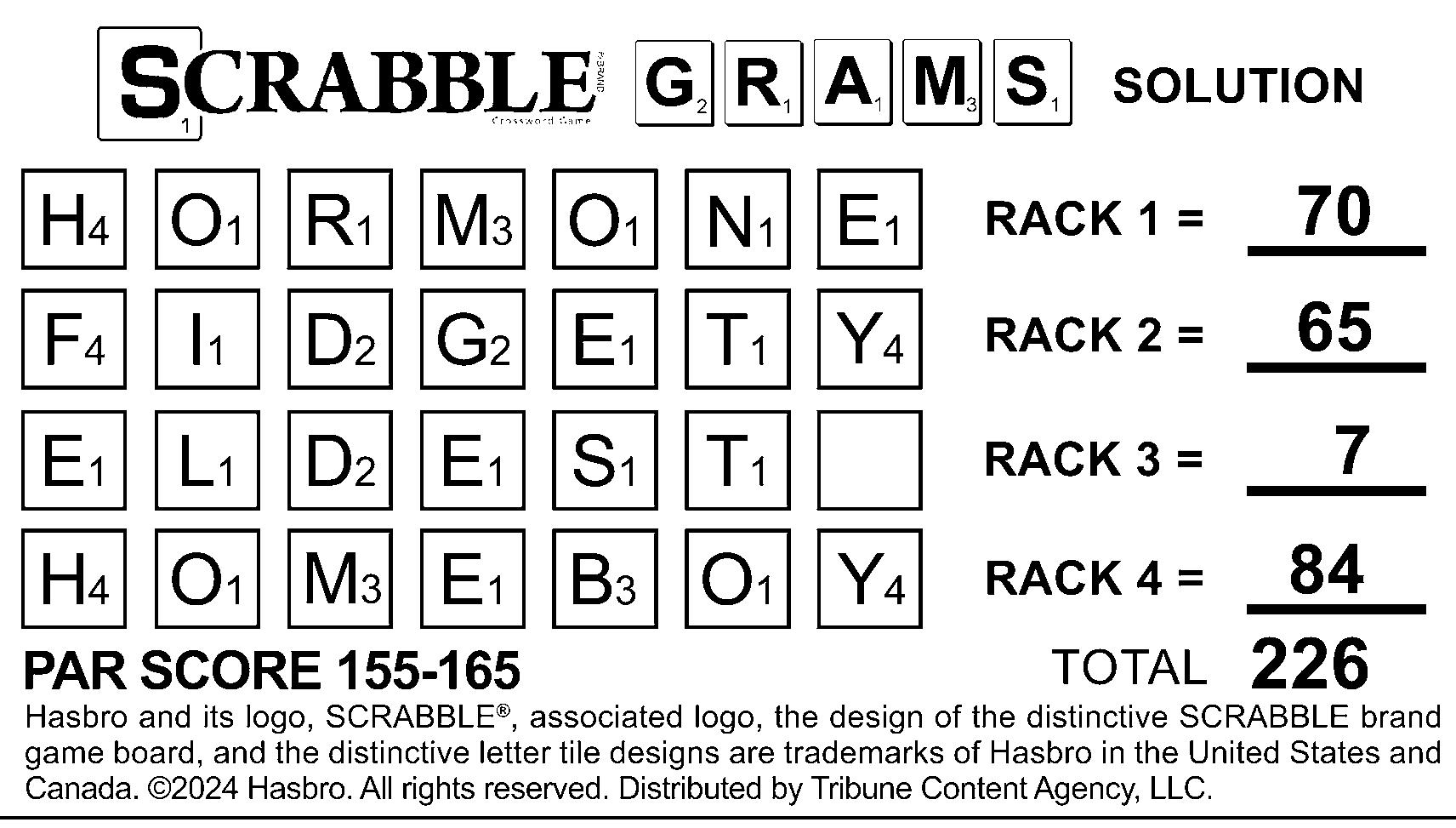
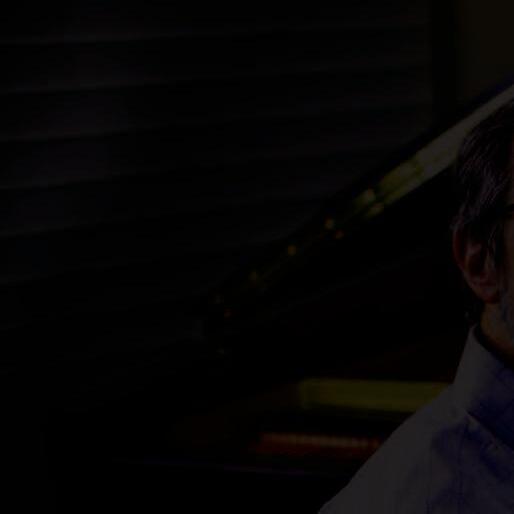
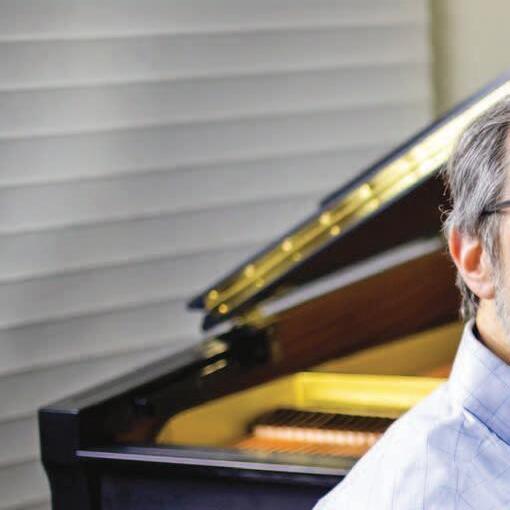
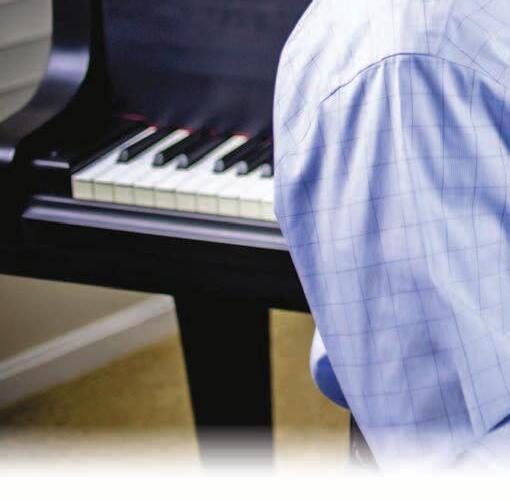

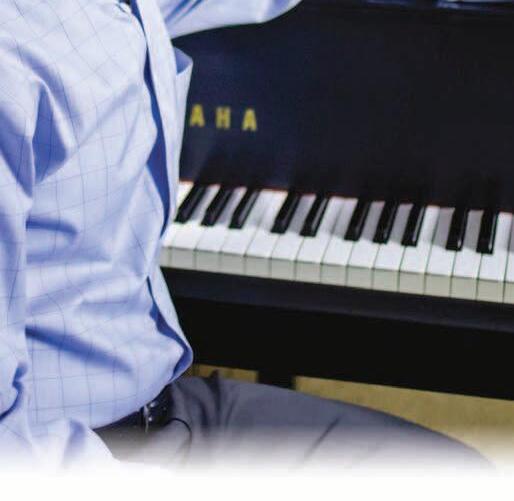





















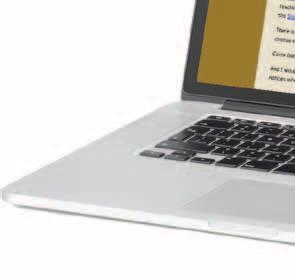













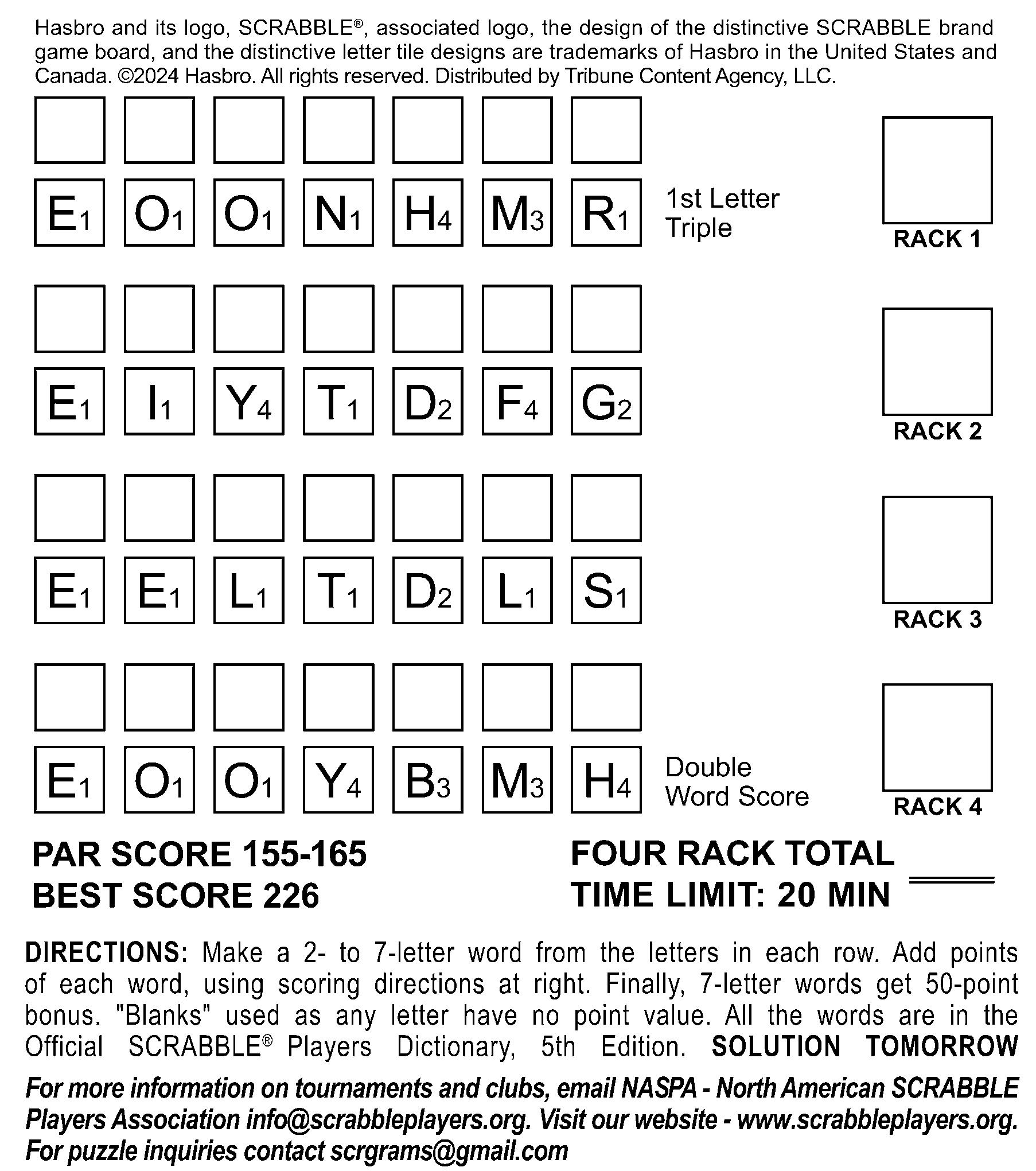
Scrabble
answers on p. 35.
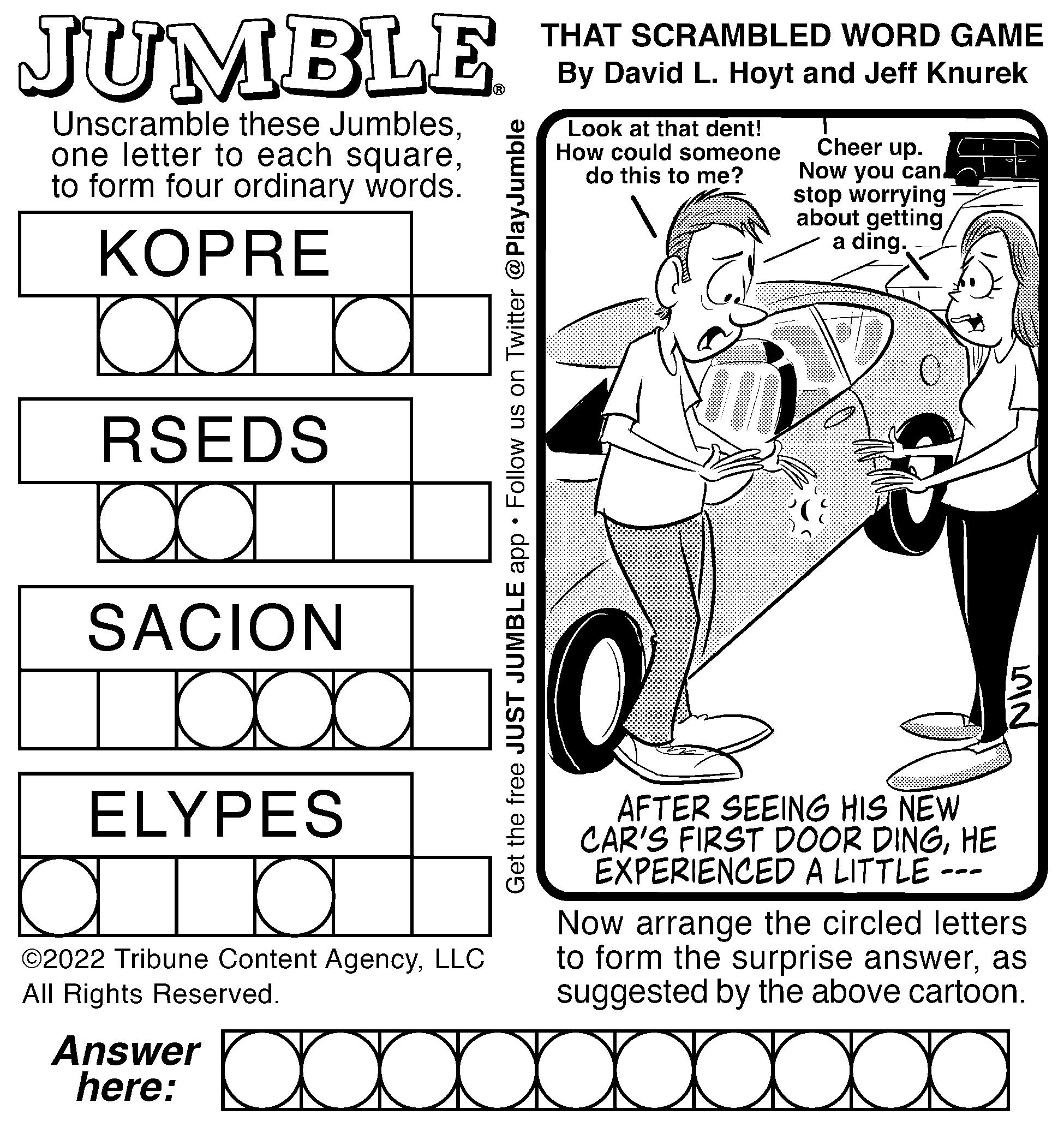
Crossword Puzzle
June Guys By Stephen Sherr
Across
1. Pay phone token, circa 1970
5. Abbreviation for abbreviation
9. Still breathing
14. “Good grief!”
15. Too good to be ___
16. Corporal punisher
17. Actress Bancroft or Hathaway
18. Replacement part from www.unicycle.com
19. Absolute
20. 2000 mini-series about George Washington and Thomas Jefferson
23. Stat. on a baseball card
24. Ship containing an even number of animals
25. “___ can make you smart; it made Bud wiser”
26. Draw a connection
28. McDonald’s Happy ___
30. M&M center, sometimes
33. 2003 Eddie Murphy movie with two sequels
36. Prefix meaning “one-billionth”
39. ___-Wan Kenobi
40. Arm bone
41. Top grossing movie of 1972
46. Witchy woman
47. “Referred,” in brief
48. Antsy
52. Most of the top-right of American-made world maps
54. Leader of U.S. Army basic training drills
55. He played Richie on “Happy Days”
56. Radio series that moved to TV in 1954
61. Movie that claimed “In space, no one can hear you scream”
62. Costa ___
63. Take away roadblocks
64. Violate Commandment number 10
65. Tattoo shop inventory
66. Arab chieftain
67. Members of The Breakfast Club
68. It might say “Miss Mississippi”
69. Cough syrup amts.
Down
1. Harder of hearing
2. Give the cold shoulder
3. Book of operating instructions
4. First nudist resort
5. Wearing
6. Back from the ___
7. End of Harris- or Ham- in an atlas
8. Part of an aquarium display
9. In a severe manner
10. Carpenter’s machine
11. On the inside
12. Swerve off course
13. Commits a faux pas
21. “Experts often possess more ___ than judgment” (Colin Powell)
22. Rhyme scheme in a villanelle poem
27. Man’s best friend
28. “I accept the blame”
29. Make a change to some DNA
31. Carry-out container from a funeral home
32. Earl Grey, e.g.
34. Lose a hand of strip poker
35. It may be worse than the disease
36. Last in a long series
37. Moment in every episode of Columbo
38. About 26% of blood donors
42. Gets one’s bearings
43. ___ John letter
44. Malarkey!
45. Docs that treat deviated septums
49. Soap opera fake-outs
50. Dish the dirt
51. Uses an automatic door
53. Actor Martin or Charlie (but not Emilio)
54. Stereotypically bad holiday present
56. Bit of trivia
57. Rash-soothing plant
58. Santa Claus’ first name, sometimes
59. Guest at a quinceanera
60. Borscht vegetable
Bob Levey
From page 35
She didn’t have to implore me or lecture me. We agreed: Grandpa can drive during the day. But not at night any more.
If I’m alone, I summon a ride share. If we’re together, and we’re leaving an evening event, I now clamber into the shotgun seat without a word. We move off. We arrive home. I pat her on the shoulder.
“Well done,” I say.
But here’s what I want to say:
“I’ve always been the driver. I’ve always expected to do that. It’s part of my longtime hubby job — taking care of you. And now I can’t do that as much or as well as I once did. That’s a big adjustment.”
However, she holds the ace of trumps.
A gigantic SUV approaches from the opposite direction. The headlights blossom out into a three-foot-wide blast.
“Headlight splash?” she will ask. Yes, I will confess.
There are worse things than cataracts. Some fine day, I’ll have the surgery. For now, I am a grudging, daytime-only, control-surrendering driver. It’s as tough a pill to swallow as wrinkles and flab.
Bob Levey is a national award-winning columnist.
BEACON BITS
Ongoing
MANNA FOOD CENTER VOLUNTEER
Manna Center Food Bank is seeking volunteers to sort and pack food at its warehouse located at 9311 Gaither Rd., Gaithersburg, MD. Apply at mannafood.org/volunteer-with-us. For more information, call (301) 424-1130.
ONE BIG HAPPY
By Rick Detorie








CLASSIFIEDS
The Beacon prints classified advertising under the following headings: Business & Employment Opportunities; Caregivers; Computer Services; Entertainment; For Sale; For Sale/Rent: Real Estate; Free; Health; Home/ Handyman Services; Miscellaneous; Obituaries; Personals; Personal Services; Vacation Opportunities; and Wanted. For submission guidelines and deadlines, see the box on page 39.
CAVEAT EMPTOR!
The Beacon does not knowingly accept obscene, offensive, harmful, or fraudulent advertising. However, we do not investigate any advertisers or their products and cannot accept responsibility for the integrity of either. Respondents to classified advertising should always use caution and their best judgment.
EMPLOYMENT & REAL ESTATE ADS:
We will not knowingly or intentionally accept advertising in violation of federal, state, and local laws prohibiting discrimination based on race, color, national origin, sex, familial status or handicap in connection with employment or the sale or rental of real estate.
A HOME HEALTHCARE- Experienced nurses, CNA, GNA are available 24/7. Cooking, companionship, personal care, housekeeping, driving. Full/Part-time or live-in care. 15 years’ experience. 240-533-6599.
M&D HEALING HOMECARE AGENCY serving Montgomery County, MD. Our mission is to provide high-quality, compassionate, and personalized in-home care services to seniors and individuals with disabilities. We aim to enhance the quality of life of our clients while allowing them to remain in the comfort of their homes. We are a licensed and insured non-medical homecare provider. Our services will include dependable registered nurses, personal care, companionship, respite care, and specialized care for individuals with chronic conditions. We are located in Silver Spring, MD. Please visit our website for detailed info. Https://www.mdhealinghcs.com: Contact # 301-388-0560 or 301-2549103. Email: abra_dessali@hotmail.com or info@mdhealinghcs.com.
COUGAR CARE HEALTH AND HOME
SERVICES We are a long term health and home care agency serving the mature male and female adults in the Washington DC Metroplitan Area We provide CNA’S, Caregivers, Companions, Nurses, Personal Assistants, Housekeepers, Personal Trainers, Drivers or any other employee you may need. For more information and to place an order call #202-317-0679.
COMPANION NEEDED FOR 2 ELDERLY GENTLEMEN . Seeking help with personal care, scheduling requiring computer skills, driving, light housekeeping and meal prep and other help as needed. In Potomac, MD. 30+ hours/week. Reference required. Respond to lensrink@yahoo.com.
MOBILE HAIR & NAIL SERVICES - WE COME TO YOU. Professional Licensed Hair Stylist. Women and Men’s Services - All Hair Types. Cuts, Styles, Roller Sets, Color, Perms, Men’s Cuts & Facial Grooming, Manicures & more. Call 301-338-8251.
CERTIFIED NURSING ASSISTANCE 10 years of experience. Looking for a full time private duty job. Will provide health care services, tender loving care. Companion, House Keeping, Daily Grooming and Shopping. Please call Bola 301-996-5180.
A CARE AGENCY - Been in business for more than 10 years. Experienced nurses, CNAs, GNAs. Any hours you need. Flat rate for live-in. Duties include cooking, housekeeping, bathing, errands, etc. Tel: 667-231-8235
COMPUTERS, TELEVISIONS, CELL
PHONE Help For Seniors. We offer patient and thorough help for seniors with all matter of technology. We come to your home. We service MD, VA and DC. Call Senior Tech Pro at 301337-0028. Available 24/7 Ask for Philip.
EMPLOYEES FRUSTRATED WITH A NEW COMPUTER system at work? For a smooth transition schedule a call today 910-2097464. Email: connect@mebeingtempest.com Hourly Rate: $75.
UP TO $15,000.00 OF GUARANTEED
LIFE INSURANCE! No medical exam or health questions. Cash to help pay funeral and other final expenses. Call Physicians Life Insurance Company - 866-212-1092 or visit www.Life55plus.info/beacon
WESLEY FINANCIAL GROUP, LLC Timeshare Cancellation Experts. Over $50,000,000 in timeshare debt and fees cancelled in 2019. Get free informational package and learn how to get rid of your timeshare! Free consultations. Over 450 positive reviews. Call 855-626-8703.
TAX PREPARATION. Licensed CPA 35+ years, reasonable rates; will travel within 20 miles. Located in Gaithersburg near Rte 270/370. DIANE CHRISTEN CPA; dianechristen@aol.com; 240-355-1135 cell.
2 CEMETERY PLOTS AT KING DAVID
MEMORIAL GARDENS in Falls Church Virginia. (Jewish Cemetery). Reduced sale price $3995.00/ each or best offer 510-326-2493.
EXTRA LARGE SELF PROPELLED
LAWN MOWER. Excellent condition. Ten years old. $300.00. Call Joe 301-216-2541.
PREPARE FOR POWER OUTAGES
TODAY with a Generac Home Standby Generator. Act now to receive a FREE 5-Year warranty with qualifying purchase. Call 1-301-960-3174 today to schedule a free quote. It?s not just a generator. It?s a power move.
NEW WINDOWS FROM WINDOW NATION. Special money saving offer - zero down, zero payments, zero interest for TWO years AND buy 2 windows and get 2 FREE! Offer is valid for select models. Labor not included. Other restrictions apply. Call Window Nation today! 855-909-2278.
REAL ESTATE MADE EASY! Looking to buy or sell? KW Metro Center has you covered with expert guidance and local insights. Call or visit tauheedgul.kw.com for more info! Tauheed Gul (Tony) Real Estate Agent VA 0225263776 C 703.659.7366 O 703.224.6000.
DISCOVER NORTH STAR NAVIGATORS: Your Trusted Partner in Elder Support Services. At North Star Navigators, we are dedicated to making a positive impact in the lives of our aging population. We understand the challenges that come with aging and are driven by a personal quest to enhance the well-being of seniors. Our telehealth services include: - Comprehensive Assessments & Recommendations - Golden Years PlanningHealthy Ship (Membership). Get Ready to Set Sail with North Star Navigators! Where YOU remain the Captain, and our Stars guide the way. Visit NorthStarNavigators.net or call 833-735-1983 for more information. Your Trusted Team: Anchored in Compassion, Driven by Passion.
I COME TO YOU and HELP YOU reach YOUR fitness goals. I am a Rehab Specialist/Personal Trainer with a lot of experience. Call 410739-3318 today to set up a FREE fitness evaluation. I offer 12,24 and 36 session packages that save you a lot of money.
PORTABLE OXYGEN CONCENTRATOR May Be Covered by Medicare! Reclaim independence and mobility with the compact design and long-lasting battery of Inogen One. Free information kit! Call 855-8510949.
DENTAL INSURANCE from Physicians Mutual Insurance Company. Coverage for 400 plus procedures. Real dental insurance - NOT just a discount plan. Do not wait! Call now! Get your FREE Dental Information Kit with all the details! 1-844-366-1003 www.dental50plus.com/320 #6258
MOBILEHELP, America’s Premier Mobile Medical Alert System. Whether You’re Home or Away. For Safety and Peace of Mind. No Long Term Contracts! Free Brochure! Call Today! 1240-650-9189.
MOVING OR LIQUIDATING AN ESTATE? Let Downsizing Specialists, LLC show you how our easy process helps you decide what to keep, gift, sell, donate, or discard. Services include estate liquidation, downsizing, estate sales, house and storage unit cleanouts, and junk removal. We buy estates, vehicles, & real estate. Free estimates. Local. Family Owned. Licensed. Insured. Better Business Bureau A+ Certified Company. Call/Text Philip @ 301-219-3600 ~ DownsizingSpecialists.com
LITTLE DEEDS ACCESSIBILITY SOLUTIONS Live independently and safely in your own home through Little modifications by licensed, skilled, and deeply caring craftspeople. Did you know we can convert your tub into a shower with a Tub-Cut for a quarter of the cost of those shower conversion companies? Little Deeds also provides no-cost, no-obligation, safety, and accessibility assessments for Aging in Place or when coming home from the hospital. Text/Call 410-450-4466 https://www.littledeeds.com/
SLOWING DOWN AFTER 44 YEARS OF CONTRACTING. Small to medium jobs mainly residential but will do some commercial jobs also. Will work all over the DC area. $45.00 from arrival on job. Andy 703-906-5429.
GIL PAINTING CO. INC. Free estimates call (301)370-9940. www.gilpainting.com Interior & exterior painting, Drywall repair, Plaster repair, Roofing, Roof repair. MHIC# 150105.
THE BATHROOM OF YOUR DREAMS in as little as 1 day. Limited Time Offer - $1000 off or No Payments and No Interest for 18 months for customers who qualify. BCI Bath & Shower. Many options available. Quality materials & professional installation. Senior & Military Discounts Available. Call Today! 1-855-6530087.
DON’T LET THE STAIRS LIMIT YOUR MOBILITY! Discover the ideal solution for anyone who struggles on the stairs, is concerned about a fall or wants to regain access to their entire home. Call AmeriGlide today! 1-866-3655170.
SAFE STEP. North America’s #1 Walk-In Tub. Comprehensive lifetime warranty. Top-of-theline installation and service. Now featuring our FREE shower package and $1600 Off for a limited time! Call today! Financing available. Call Safe Step 1-866-478-2363.
AMERICAN RESIDENTIAL HEATING & COOLING. As temps outside start to climb, the season for savings is now. $49 cooling or heating system tune up. Save up to $2000 on a new heating and cooling system (restrictions apply.) FREE estimates. Many payment options available. Licensed and insured professionals. Call today 1-877-691-0273.
JACUZZI BATH REMODEL can install a new, custom bath or shower in as little as one day. For a limited time, waiving ALL installation costs! (Additional terms apply. Subject to change and vary by dealer. (Offer ends 6/30/25.) Call 1833-994-0538.
ELIMINATE GUTTER CLEANING FOREVER! LeafFilter, the most advanced debrisblocking gutter protection. Schedule a FREE LeafFilter estimate today. 20% off Entire Purchase. Plus 10% Senior & Military Discounts. Call 1-855-977-6078.
COMPLIMENTARY ESTATE PLANNING CONSULTATION. Estate planning typically involves customized legal documents to plan for incapacity and death: naming agents to make financial and healthcare decisions and designating beneficiaries to inherit assets. Call Justin M. Ginsburg, Esq. at (443) 393-7696 to schedule a complimentary consultation; learn about guardianship and probate proceedings and incorporating trusts, tax strategies and asset protection as well as special needs planning, charitable giving, retirement accounts, life insurance and vacation homes. Mr. Ginsburg is licensed in Maryland and the District of Columbia and has helped hundreds of clients since 2017. He is a Senior Associate Attorney at Elville and Associates, P.C. in Rockville.
BECOME A PUBLISHED AUTHOR. We want to Read Your Book! Dorrance PublishingTrusted by Authors Since 1920. Book manuscript submissions currently being reviewed. Comprehensive Services: Consultation, Production, Promotion and Distribution. Call for Your Free Author`s Guide 1-833-992-0110 or visit dorranceinfo.com/beacon
CONSUMER CELLULAR - the same reliable, nationwide coverage as the largest carriers. No long-term contract, no hidden fees and activation is free. All plans feature unlimited talk and text, starting at just $20/month. For more information, call 1-833-742-1303.
MENDING FAMILY RELATIONSHIPS. I’m
Jane M. Connor, a licensed marriage and family therapist in Maryland, dedicated to helping families navigate these challenges. My goal is to support families in overcoming painful experiences and rebuilding relationships. Ready to take the first step? Schedule a free 15-minute consultation with me — no strings attached. Let’s explore if my approach is right for you. If not, I’ll help you find the right resources. Contact me at 202-658-5045 or janemconnor@gmail.com. Visit www.janemconnor.com for more information. Together, we can foster understanding and closeness.
DIRECTV - All your entertainment. Nothing on your roof! Sign up for Directv and get your first three months of Max, Paramount+, Showtime, Starz, MGM+ and Cinemax included. Choice package $84.99/mo. Some restrictions apply. Call DIRECTV 1-888-572-4953.
GET DISH SATELLITE TV + INTERNET! Free Install, Free HD-DVR Upgrade, 80,000 OnDemand Movies, Plus Limited Time Up To $600 In Gift Cards. Call Today! 1-844-560-5837
WILL BUY MILITARY, WWII, WWI, Civil War memorabilia items. Uniforms, weapons, helmets, photos, war souvenirs, medals, photos or any other items associated with U.S., German, Japanese or other military history. Call Dave (240-464-0958) or email (david.obal63@gmail.com).
BUYING ESTATES, FULL OR PARTIAL, large or small. Need a house cleared in a hurry, I can get it done. Also buying individual small, pretty things such as Herend, Royal Copenhagen and vintage holiday decorations. Call Susan (301) 785-1129.
PAYING TOP CASH FOR ANTIQUES AND COLLECTIBLES. Housecalls made with prompt, courteous service seven days a week and 25 years of experience! Buying toys, trains, militaria, glassware, advertising merchandise, paper items and much more! Contact Mason or Megan at: 443-306-8816.
Classifieds cont. from p. 38
Wanted Wanted
BUYING COINS, ANTIQUES, MOVING?
Downsizing, liquadating an estate? Cash paid for gold, silver, jewelry, wristwatches, old toys, old halloween and xmas decorations, books, records, musical instruments, american coins, old baseball cards and comics, old golf and sports memorabilia, etc. Please call Tom 240476-3441 thank you.
ALWAYS BUYING COMIC BOOKS (1930’s to 1985), sterling silver (anything), old coins & paper money , charm bracelets, jewelry, old costume jewelry, old dental gold, old pin-up magazines, sports cards before 1980, old fishing lures, old toy cars, and other old items. What do you have? Call or text Alex at 571-426-5363.
ALWAYS BUYING SILVER, gold-filled & gold jewelry, Old Silverware & holloware marked “Sterling”, old fountain pens, old tobacco pipes, dental gold, the old stuff... What do you have? Call or text Alex at 571-4265363. DMW area I’ll pickup!
WANTED: OLDER VIOLINS, GUITARS, BANJOS, MANDOLINS, UKULELES. Musician/collector will pay cash for older acoustic string instruments. Jack (301) 279-2158, leave message & phone number.
SEEKING PT REMOTE WORK 5-10 hrs a week (evenings/weekends) - Data Entry/Accts Payable/Independent Contractor. Call 410929-0116.
I BUY GUNS: Military/Civilian & MILITARY MEMORABILIA. I am a licensed Firearms Dealer and can legally purchase from you. Don’t risk selling to unlicensed dealers. Tim Frank 301-2010241 historian1975@gmail.com. www.midatlanticmilitaryantiques.com
CASH FOR ESTATES; Estates, Moving, Downsizing, Etc. I buy Gold, Silver, Art, Quality Glass, Historical Items, Cultural Items, and a wide range of other categories. Collections, Accumulations. Website: TheAtticLLC.com, Gary Roman, 301-520-0755.
HOW TO PLACE A CLASSIFIED AD
All classified ads must be submitted and paid for online, via our website, www.thebeaconnewspapers.com/classifieds
Deadlines and Payments: To appear in the next issue, your ad text and payment must be entered by the 5th of the preceding month (for Baltimore and Howard County editions); by the 20th (for Washington edition).
Cost will be based on the number of characters and spaces in your ad: • $25 for 1-250 • $35 for 251-500. • $50 for 501-750 (maximum length). The website will calculate this amount for you.
Note: Maryland contractors must provide a valid MHIC number.
• Each real estate listing qualifies as one ad. • All ads are subject to publisher’s discretion. Payment will be refunded if unacceptable for any reason.
To place your classified ad, visit www.thebeaconnewspapers.com/classifieds
Charitable Giving
Housing
Medical/Health/ Insurance
Events
Real
Park View Bladensburg
Park View Columbia
Park View Emerson
Park View Laurel
Willow Manor at Cabin Branch
Senior Resources
.17
Woodleigh Chase/Erickson . .3
Legal
Farr Law Firm
Services
. .23
Law Offices of Paul Riekhof

www.agefriendly.dc.gov
Livability Survey
Complete and return this survey for a chance to win $100 cash! TWO LUCKY WINNERS!
Do you live or work in Washington and are you 60 years or older? If so, we invite you to share your opinion on how age-friendly the District is. Questions in this survey were derived from a World Health Organization age-friendly indicator project that DC took part in along with 14 other cities across the globe.
Please fill out the survey below and return the entire page to any branch of the DC public library or mail to: Age-Friendly DC Survey, c/o 1324 E St SE #112, Washington, DC 20003. Prize drawing will be held June 30.
1. What DC Ward do you live in?
1 2 3 4 5 6 7 8 Other
2. How many years have you lived in DC? 0-5 6-10 11-20 more than 20
3. What is your age? _______ years
4. What is your gender?
Male Female Non-binary Prefer not to say
5. What race do you identify with? (Check all that apply)
American Indian and Alaska Native Asian Black or African American Native Hawaiian and White
Other Pacific Islander Other
6. Are you of Hispanic or Latino origin or heritage?
Yes No
7. Do you have any major limitations? (Check all that apply)
Deafness or hard of hearing
Blind or difficulty seeing Difficulty concentrating, remembering, or making decisions
Difficulty walking or climbing stairs
Difficulty dressing or bathing
Difficulty doing errands alone
8. How would you rate your overall quality of life?
Poor Average Good
9. Do you utilize a senior wellness or rec center in your neighborhood?
Wellness Center Rec Center
Both Neither
10. How accessible are senior wellness and rec centers in your neighborhood?
Not very accessible
Somewhat accessible
Very accessible
11. Do you utilize parks in your neighborhood?
Yes No
12. How accessible are parks in your community?
Not very accessible
Somewhat accessible
Very accessible
13. What type(s) of transportation do you use to go to work or run errands?
(Select all that apply)
Walk Bike Bus Metro rail
Car Other: _____________
14. How difficult is it to walk to places in your neighborhood, including for those who use wheelchairs?
Difficult Somewhat difficult Not difficult
15. How difficult is it to access public transportation from your neighborhood?
Difficult
Somewhat difficult
Not difficult
16. What type of housing do you live in?
Detached house Rowhouse
Apartment Condo
Assisted Living Other: _____________
17. Do you rent or own the place where you live?
Rent Own Other: _____________
18. Could someone enter your residence in a wheelchair without assistance?
Yes No
19. Is housing in your neighborhood affordable?
Yes No
20. Have you engaged in a volunteer opportunity in the past month?
Yes No
21. Have you participated in any social or cultural activities in the past week?
Yes No
22. Do you feel respected in your community?
Yes No
23. Do you feel socially included in your community?
Yes No
24. Do you have a neighbor(s) that you can rely on?
Yes No
25. What is your employment status?
Employed full- or part-time
Retired Student
26. Are you involved in decision-making about important political, economic and social issues in your community?
Yes No
27. Do you live in a household with internet access?
Yes No
28. How do you use the internet? (Check all that applies)
Emailing
Informational searches
Online shopping
Facebook or other social media
Sharing photos Do not use
Other:__________
29. How do you typically find out about important health and safety information? (Check all that apply)
Word of mouth Print Web
Social Media Radio
TV Other:__________
30. How difficult is it for you to find local sources of information about your health concerns and service needs?
Difficult
Somewhat difficult
Not difficult
31. How difficult is it for you to access physical activity options in your area?
Difficult
Somewhat difficult
Not difficult
32. How difficult is it for you to access healthy food options in your area?
Difficult
Somewhat difficult
Not difficult
33. Do you feel you know what to do in an emergency?
Yes No
34. Over the past year, have you had enough income to meet your basic needs without public or private assistance (e.g. private loan, family financial support)?
Yes No
35. Over the past year, were you enrolled in or did you regularly attend any education or training sessions, either formal or informal?
Yes No
36. How safe is your neighborhood from crime? Unsafe Somewhat safe Safe
37. Do you have any personal care or assistance needs?
Yes No
38. How often do you pick up the Beacon newspaper?
Often Sometimes Never
39. How often do you read the “Living Boldly” newsletter (news for D.C. residents) that appears in the Beacon?
Often Sometimes Never
40. How often do you read “Living Boldly” online?
Often Sometimes Never
OPTIONAL
Please enter your email or home address so we can send you the $100 prize if you win the random drawing. Your name will not be associated with your survey answers:
Email:
Name:
Address:
City/State/Zip:
